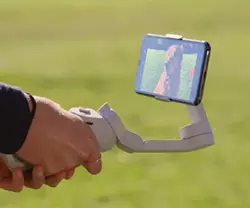DJI OM4 (Osmo Mobile 4) Review 2025: the Most Technologically Advanced Smartphone Stabilizer
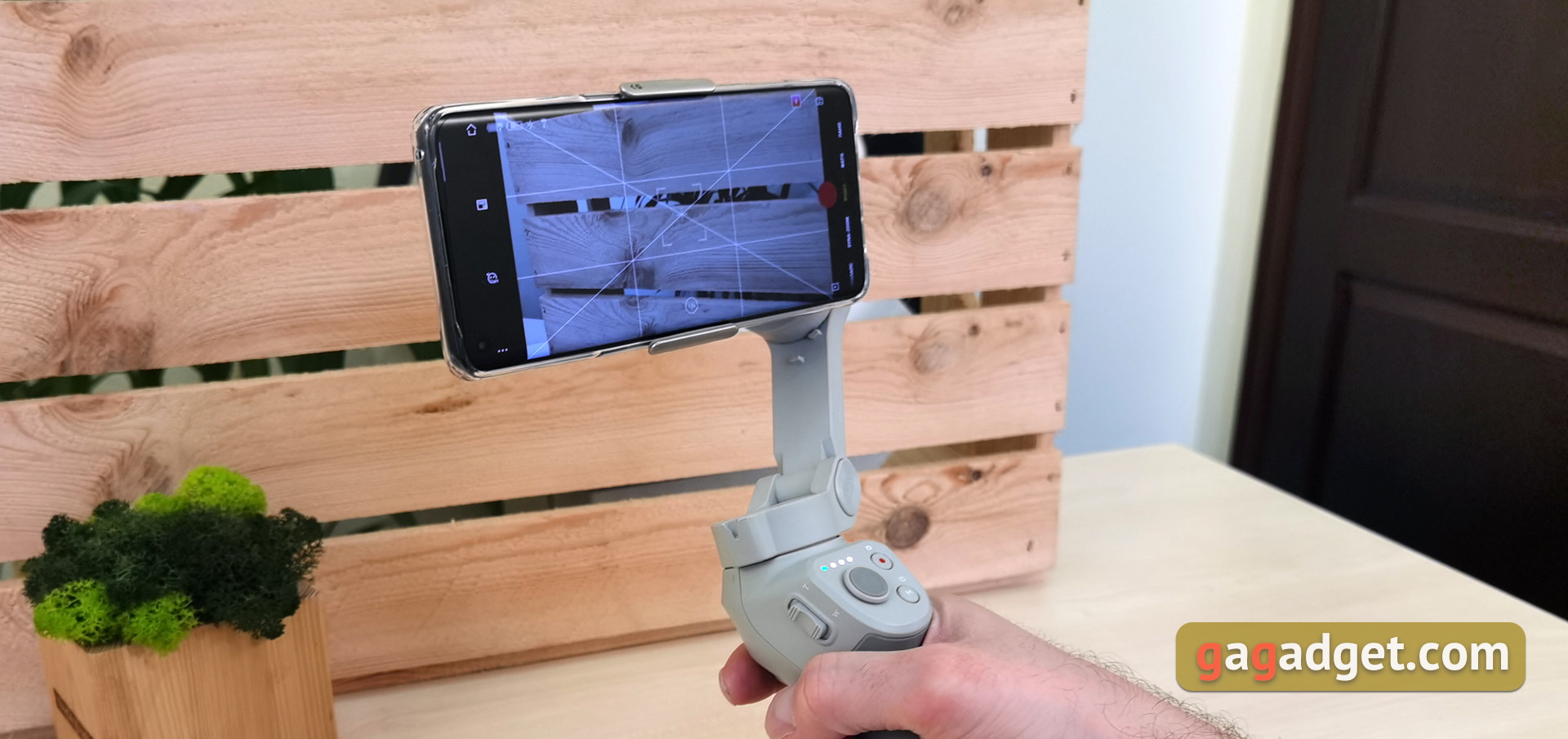
DJI OM4 smartphone stabilizer is a very useful thing for those who like to shoot a lot of video, travel, shoot sports events, children, blogs and so on. The DJI OM4 does a great job of reducing motion capture shake, but it also has a bunch of extra modes and features that will help make your videos more diverse. But keep in mind that the maximum set of features will only be available with some smartphones: Apple, Samsung and Huawei flagships. The stabilizer is well made, has a convenient, intelligent folding design and is generally quite easy to use. And it delights with its long battery life. Is it worth buying if you shoot a lot of video and want to improve the quality? Yes. Should I buy the DJI OM4 if you already have the Osmo Mobile 3 and you are happy with it? Probably not necessary. The difference is not that dramatic.
5 reasons to buy the DJI OM4:
- Excellent stabilization
- Convenient, compact and smart folding design
- Simple and intuitive use
- Variety of modes, functions and features
- Long battery life
2 reasons not to buy DJI OM4:
- The functionality varies significantly from smartphone to smartphone
- You already have a DJI Osmo Mobile 3
What's in the package?
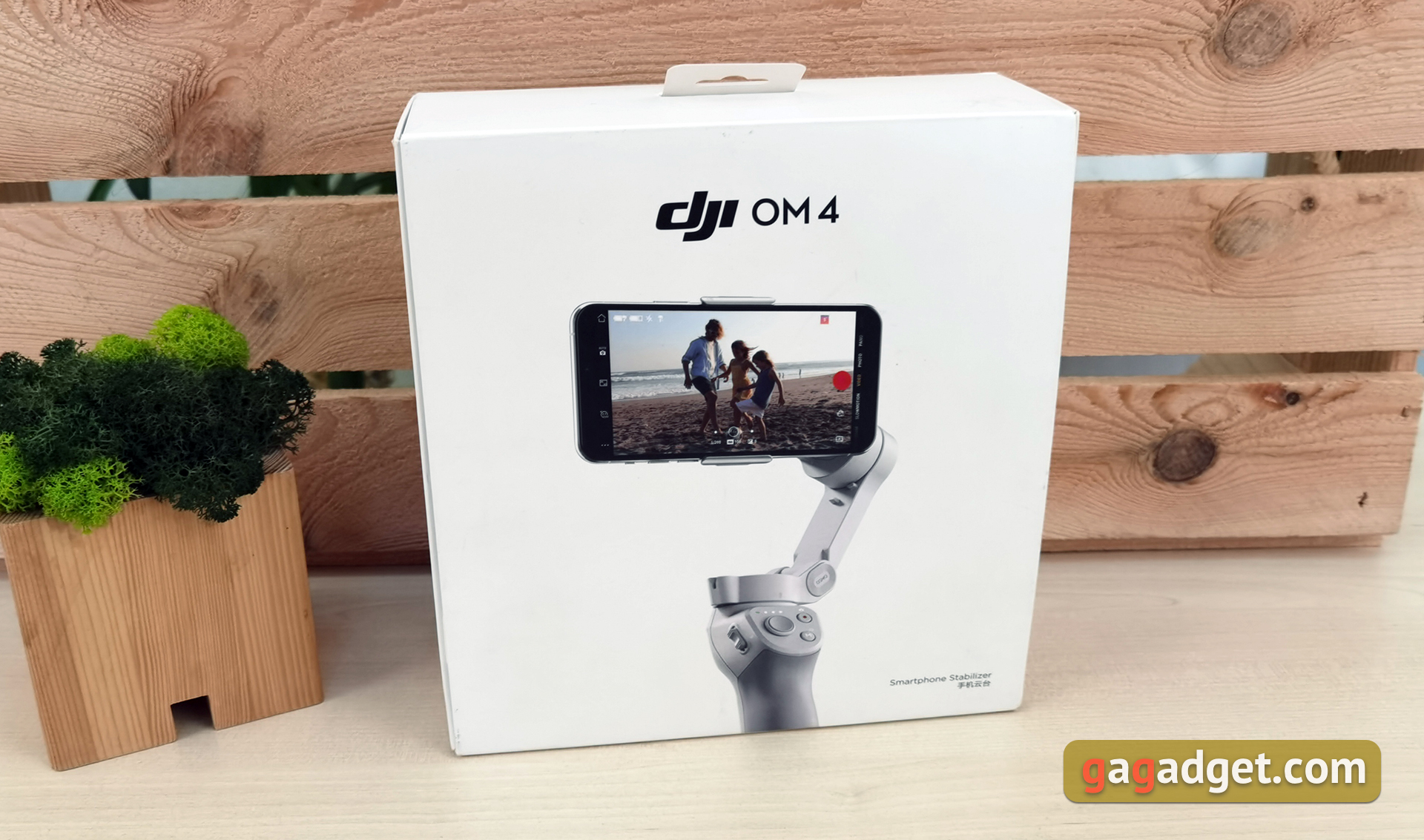
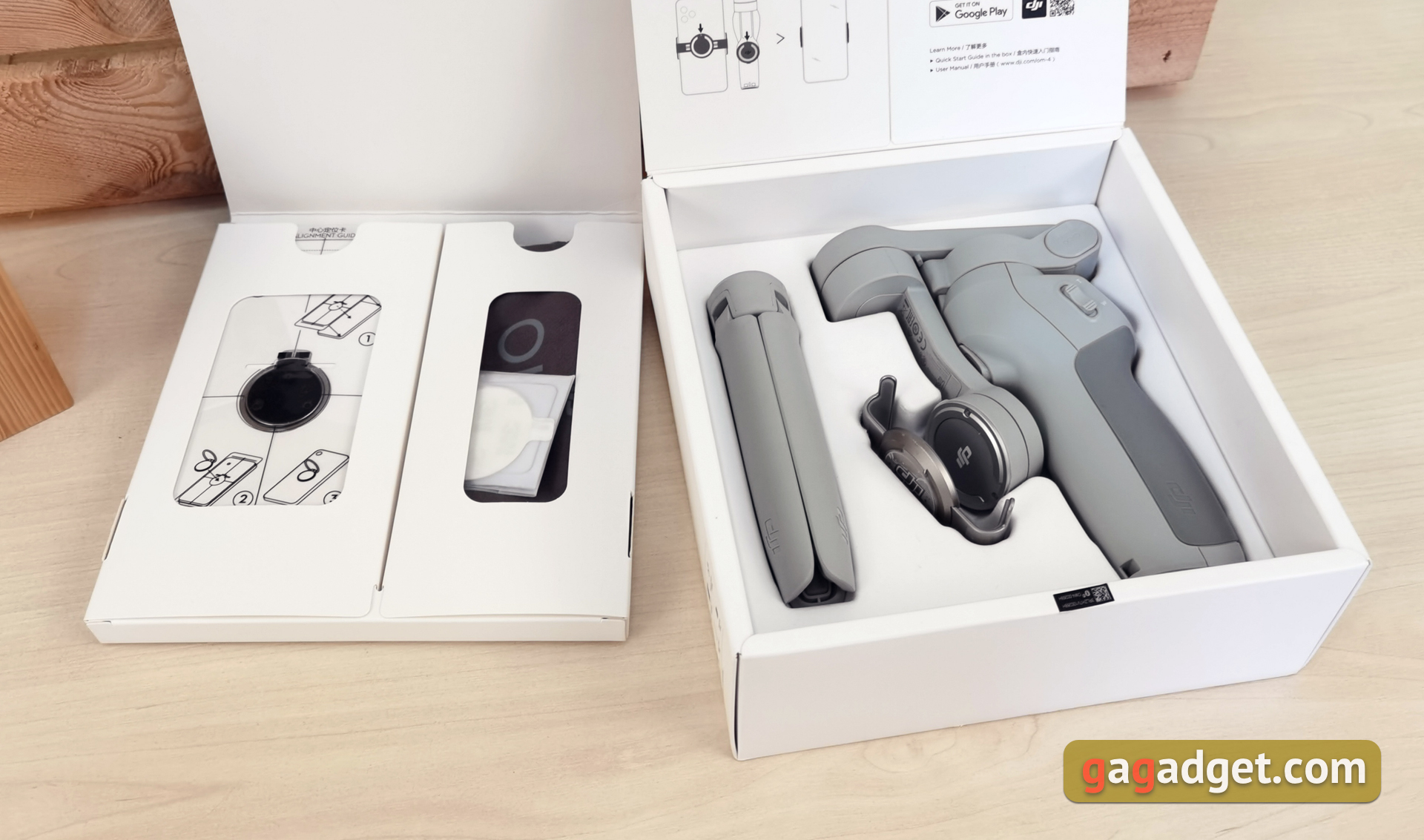
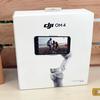
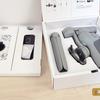
Unlike the DJI Osmo Mobile 3, which was available in two different packages, the DJI OM4 version is just one, but comes with everything you need. The stabilizer comes in a large white box with beautiful printing. Inside the box you will find the DJI OM4 itself, a removable tripod, a magnetic clamp mount, another magnetic mount in the form of a " puck" with a hinged ring, a stencil for correctly positioning the mount on your smartphone, a wrist strap (not delivered to us), a carrying bag, a recharging cable and all the necessary documentation.
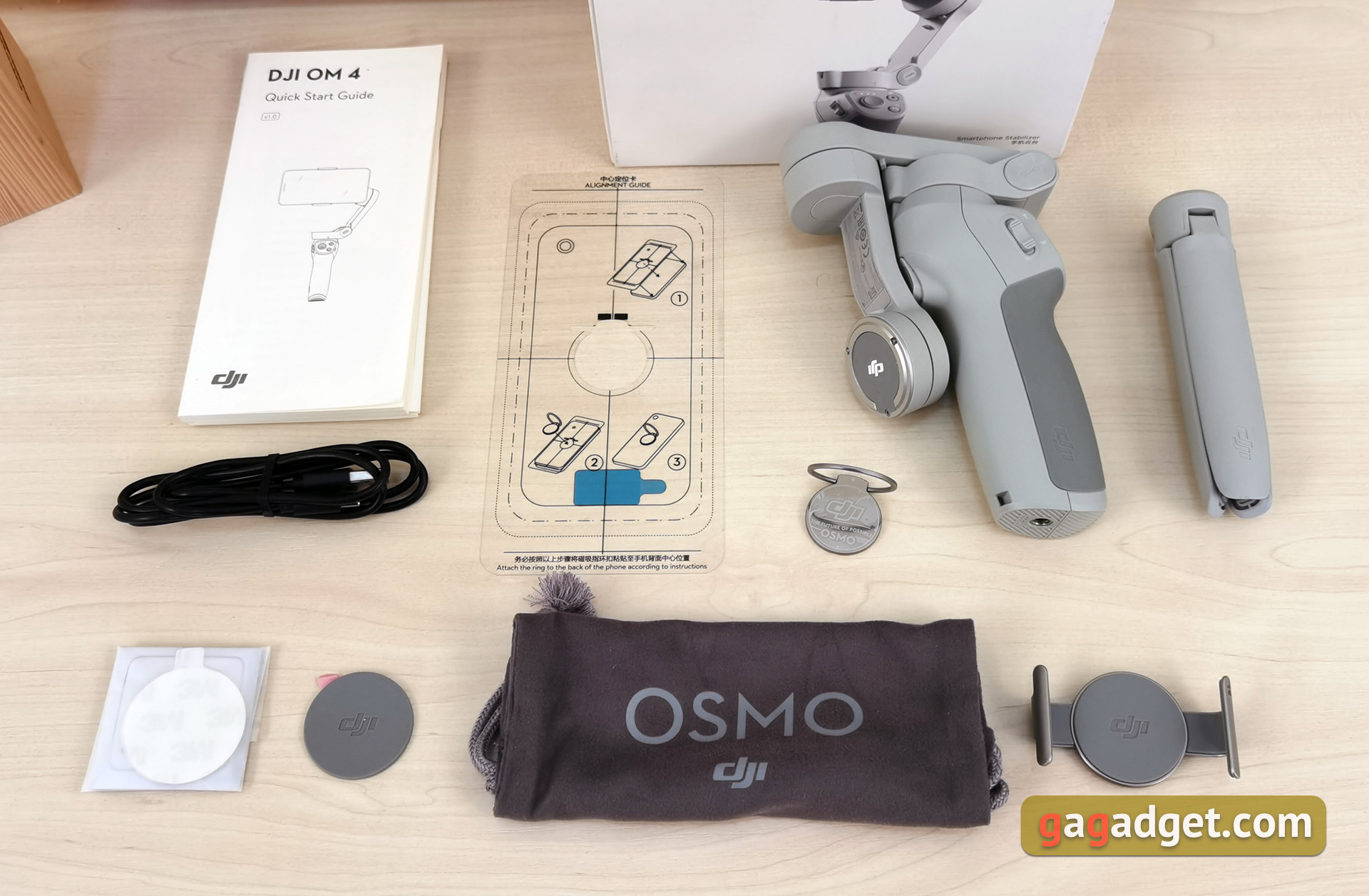
The difference between DJI OM4 and DJI Osmo Mobile 3
There are only a couple of fundamental differences from the previous model, but they are quite interesting. The first is the type of mount. The previous version used a non-removable, rather massive clip. In DJI OM4 they decided to switch to a magnetic mount, thereby improving the ease of use "on the go". There are two mounting options: a metal clip with a magnetic pad and just a magnetic pad with a hinged ring that is glued either to the smartphone itself or to the protective casing. And in order not to misfit with the hit you need the above stencil for smartphones of different sizes. The point is that if you do not use the stabilizer, or need to answer the phone, you do not need to dig the smartphone out of the clip, just remove it along with the mount.
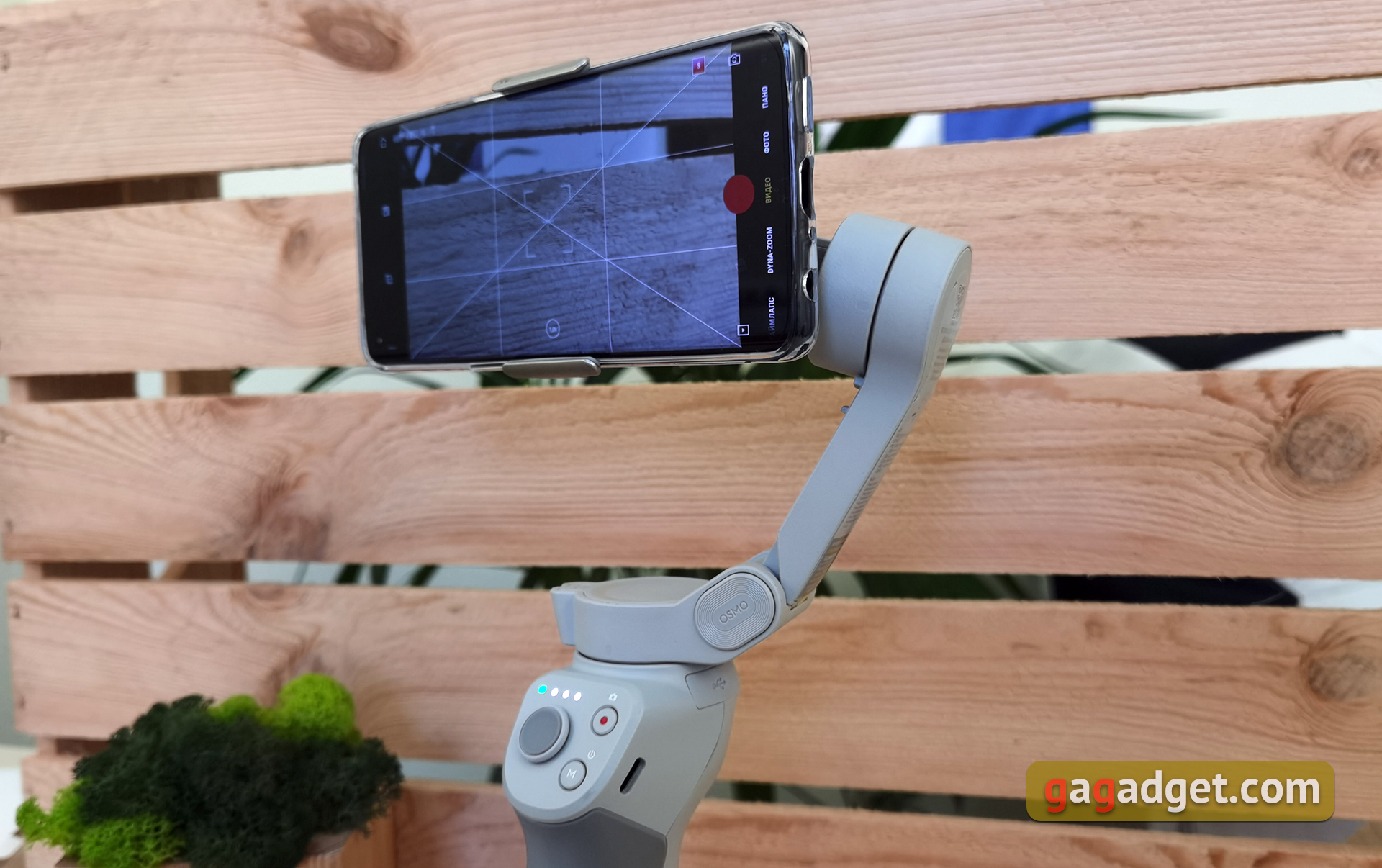
The second important innovation - reinforced motors with increased "load capacity". In accordance with the general trend to increase the screen diagonals, the size and weight of smartphones. The stabilizer works with smartphones 230 ± 60 g, 6.9-10 mm thick and 67-84 mm wide. That means that nearly all current smartphones will fit, if not all.
DJI OM4 VS DJI Ozmo Mobile 3
| DJI Ozmo Mobile 3 | DJI OM4 | |
| Body | Unfolded: 285x125x103 mm; Folded: 157x130x46 mm; Weight: 405 g |
Unfolded: 276x119.6x103.6 mm; Folded: 163x99.5x46.5 mm; Weight: 390 g; Magnetic clip: 32.6 g; Magnetic ring holder: 11.4 g |
| Compatible phone weight | 200 ± 30 g | 230 ± 60 g |
| Compatible phone thickness | ≤ 9.5 mm | 6.9-10 mm |
| Compatible phone width | 62-88 mm | 67-84 mm |
| Battery | 2450 mAh (17.64 Wh) | 2450 mAh (17.64 Wh) |
| Stabilizer charging port | USB Type-C | USB Type-C |
| Smartphone charging port | USB Type-A | USB Type-A |
| Thread for tripod | 1/4 inch | 1/4 inch |
| Wireless connection | Bluetooth 5.0 | Bluetooth 5.0 |
| Turning angles | Pan: -162.5° to 170.3° Roll: -85.1° to 252.2° Tilt: -104.5° to 235.7° |
Pan: -161.2° to 171.95°, Roll: 136.7° to 198°, Tilt: -106.54° to 235.5° |
| Maximum turning speed | 120°/s | 120°/s |
| App | DJI MIMO | DJI MIMO |
| Tripod | Not Included | Dimensions: 138х32х32 mm, Weight: 72 g |
DJI OM4 design
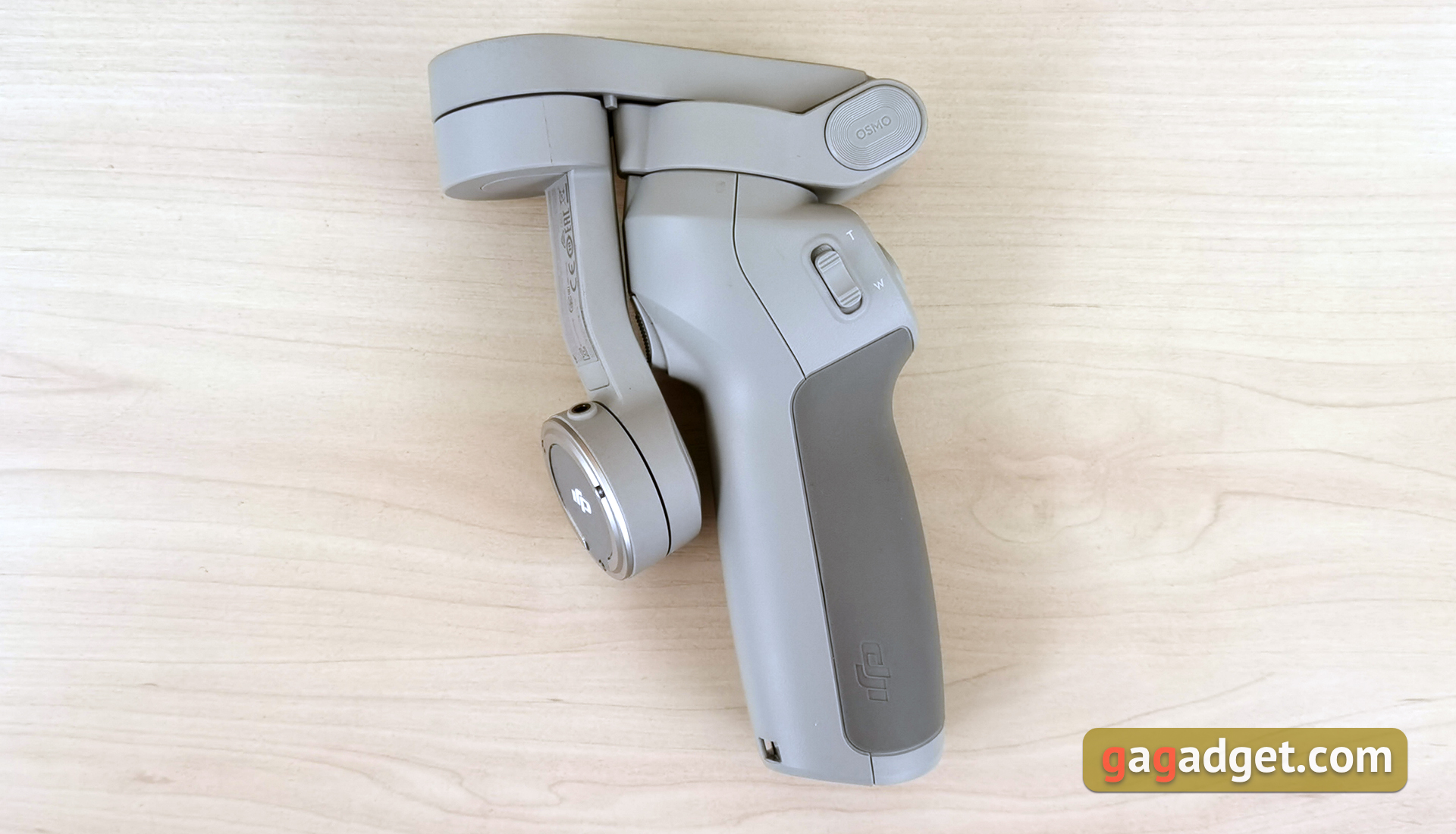
The overall design is pretty much unchanged compared to the last version. The DJI OM4 is a three-axis foldable and fairly compact stabilizer. It is mostly made of a rough matte plastic in light gray color. It has a rubberized pad on the handle for a more secure grip. It looks good and stylish, but the color is not the most practical: with active use stains will be visible very quickly. When folded, the DJI OM4 takes up very little space and is ready for action in just a few movements.
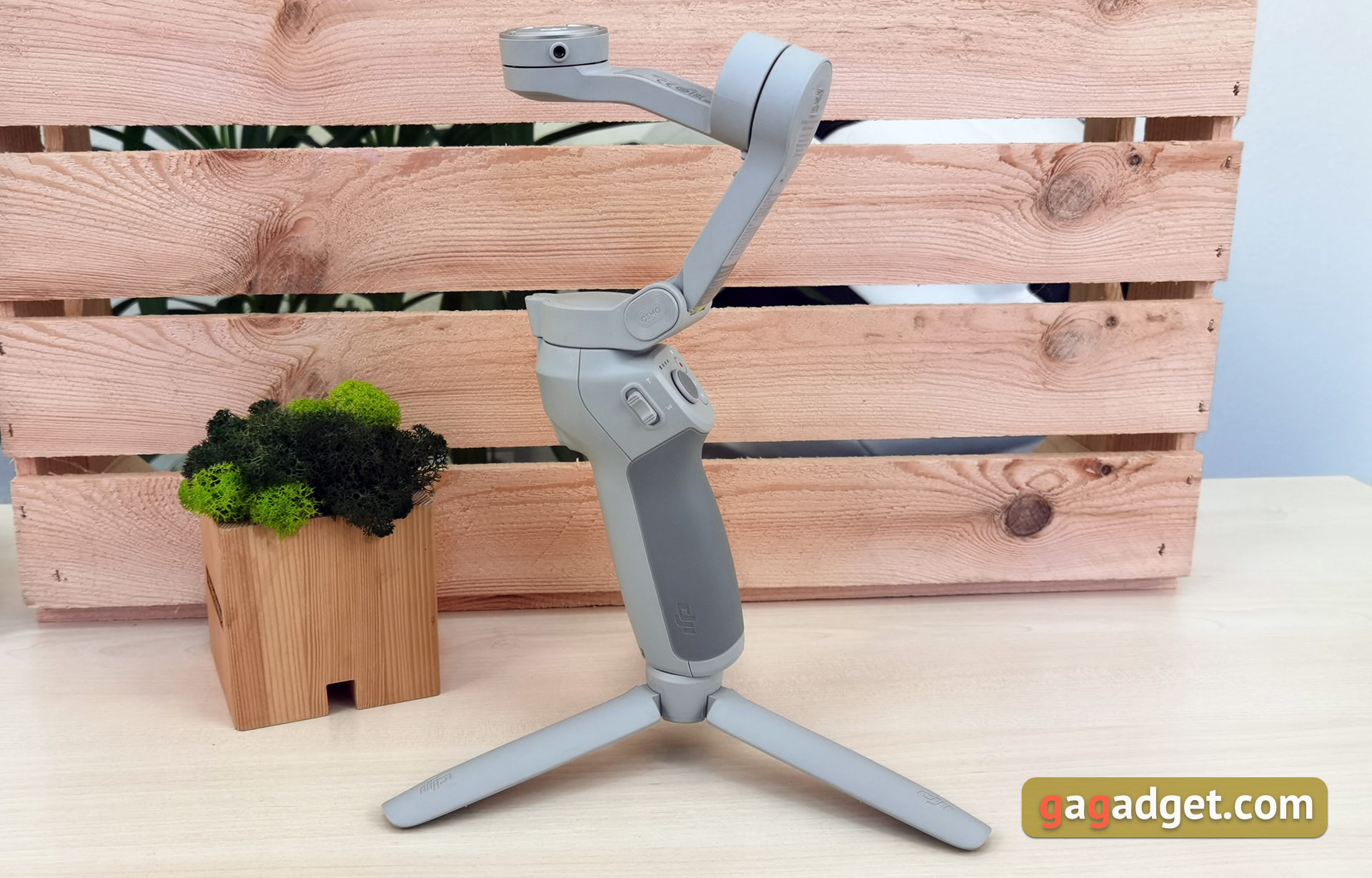
The round magnetic mounting pad is decorated with the DJI logo and has a protrusion at the top for a proper connection to the mount. There is a threaded socket on the side that is designed for counterweights in case additional optics or microphones are used with the smartphone. In general, anything that can shift the center of gravity of the smartphone.
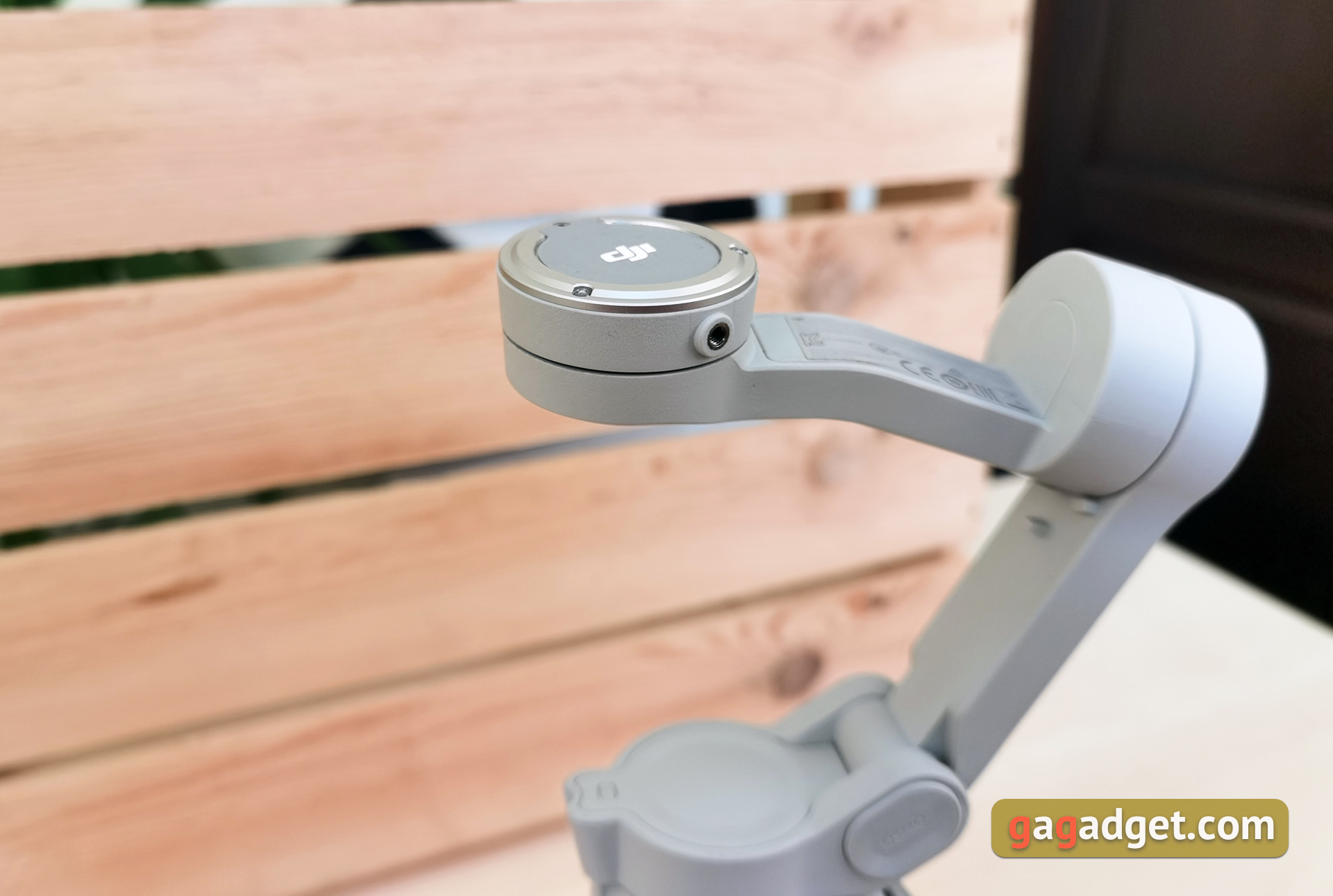

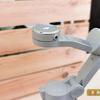
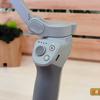
The Type-C port for charging the stabilizer is located to the right of this pad. To the left there is a two-position zoom control slider.
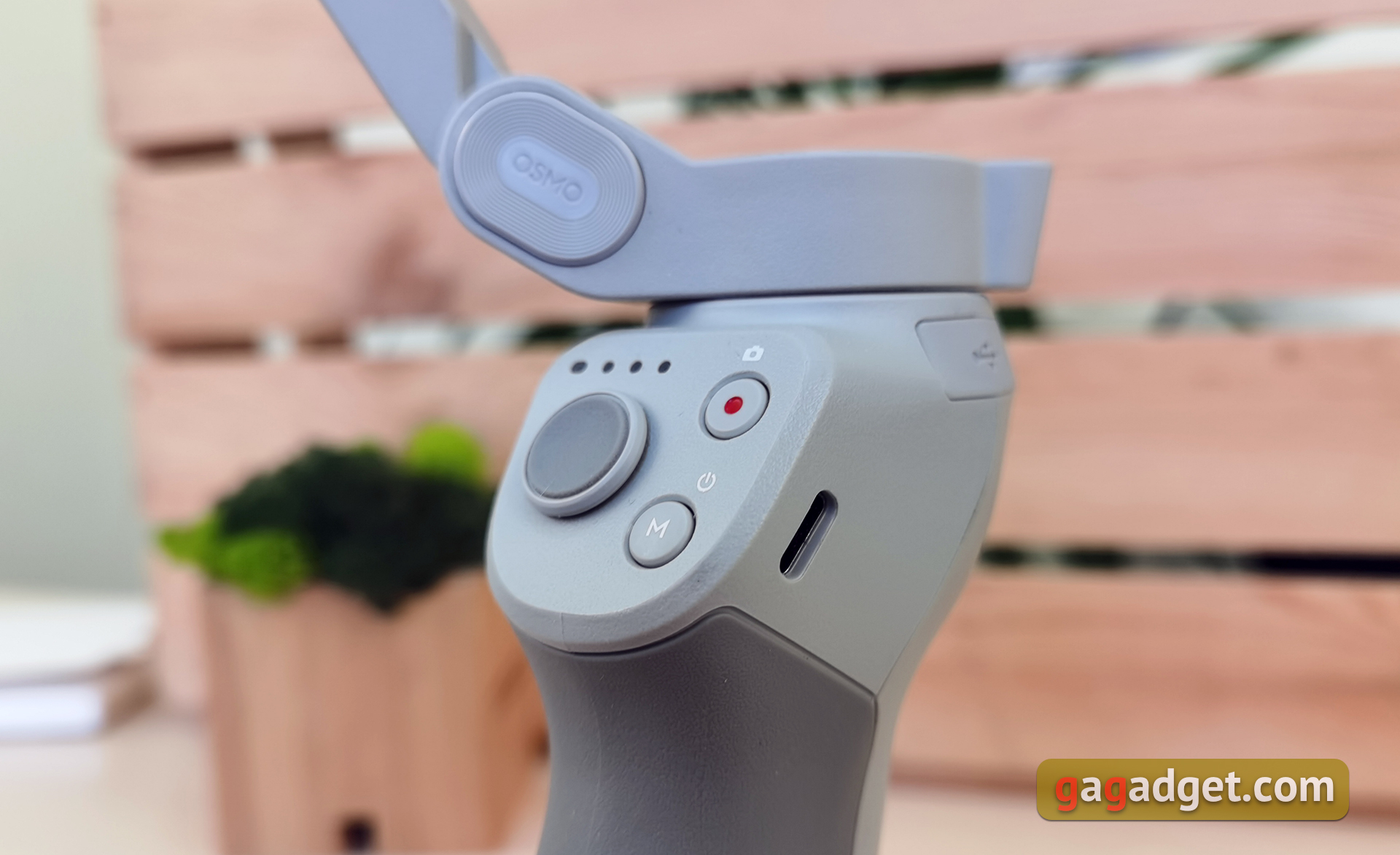
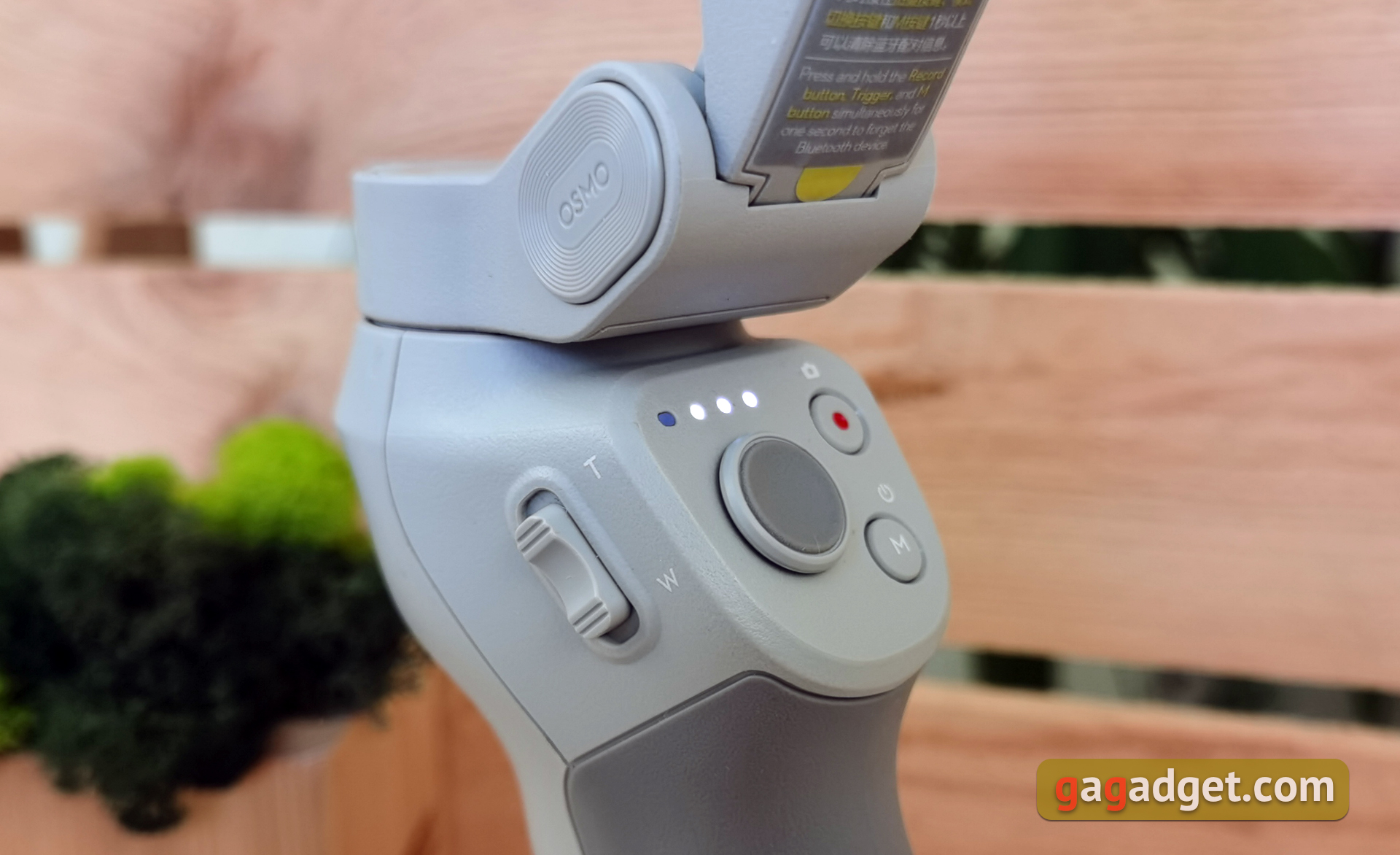
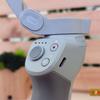
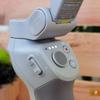
The trigger is present, just like in the last generation. It is multifunctional, responsible for Active Track 3.0 object tracking, position alignment and stabilization modes.
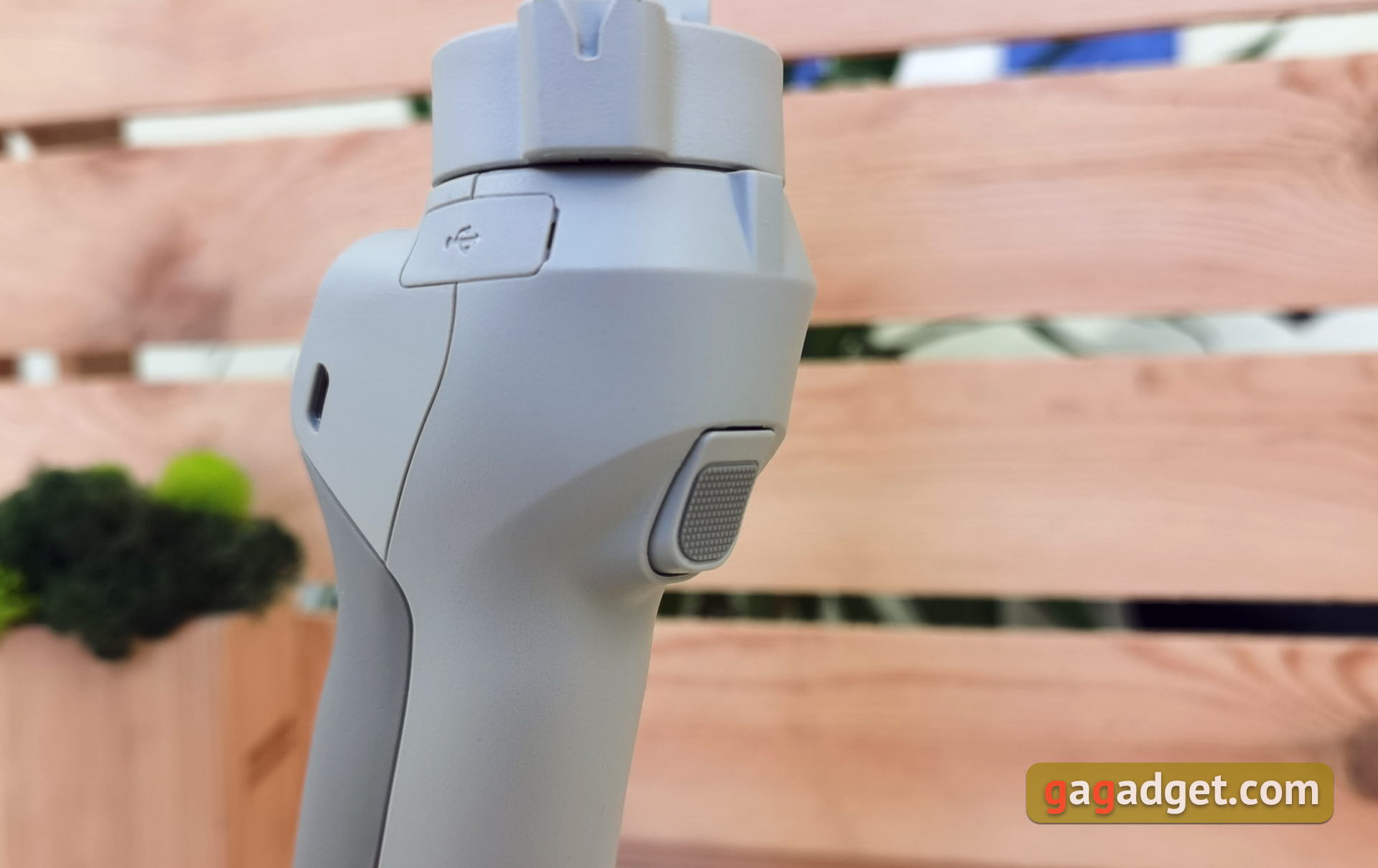
On the right side, just above the handle, there is a USB Type-A plug. It is designed to charge your smartphone from the stabilizer while in use if needed. By the way, the DJI OM4 itself can also be charged when you are using it.
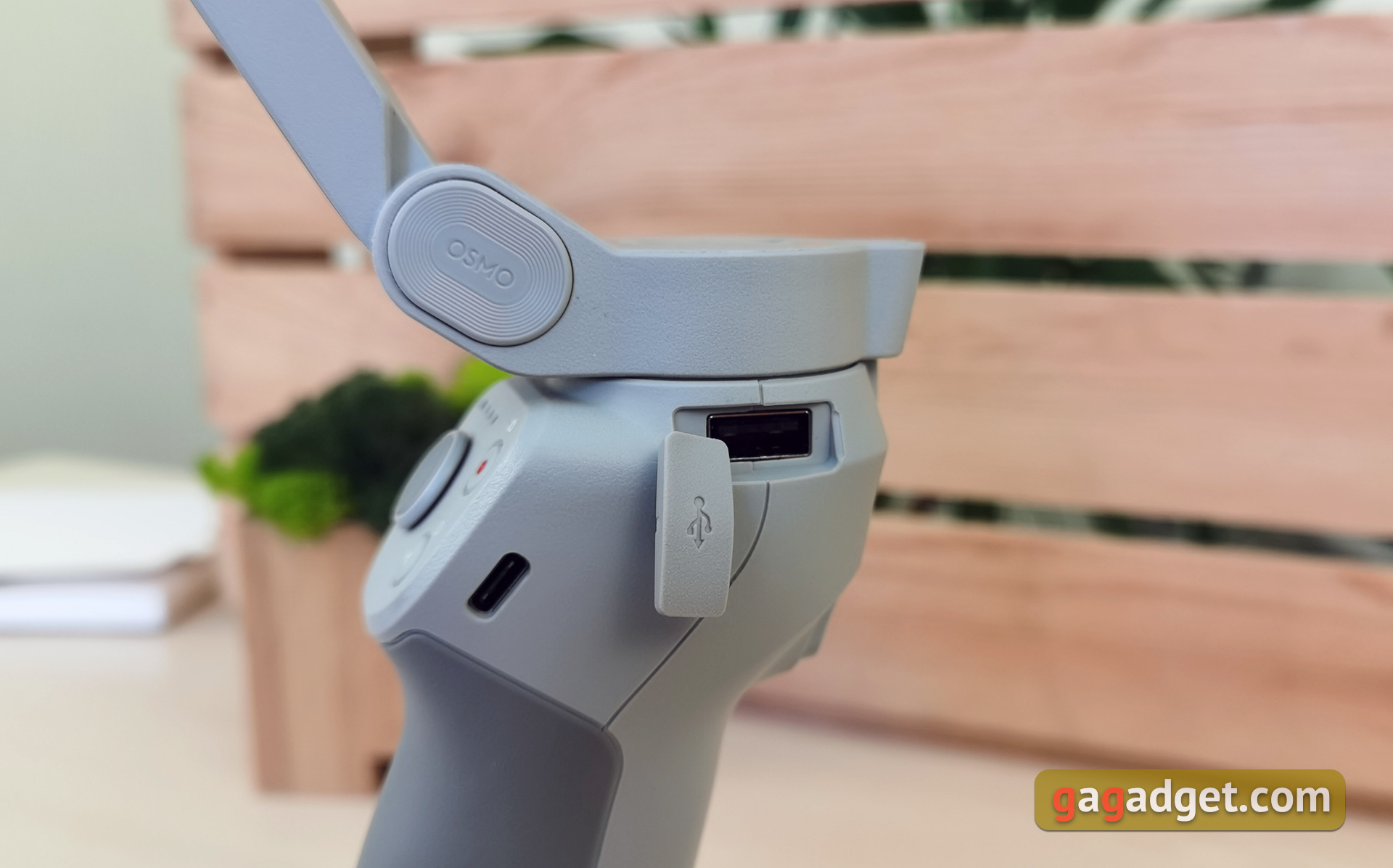
The bottom of the handle has an "ear" for attaching a wrist strap. The bottom has a hole with a 1/4 standard tripod screw thread, to which you can screw either a supplied tripod or any other tripod with a standard thread. The tripod can be used not only as a support: when folded, it can serve as a small extension of the handle.
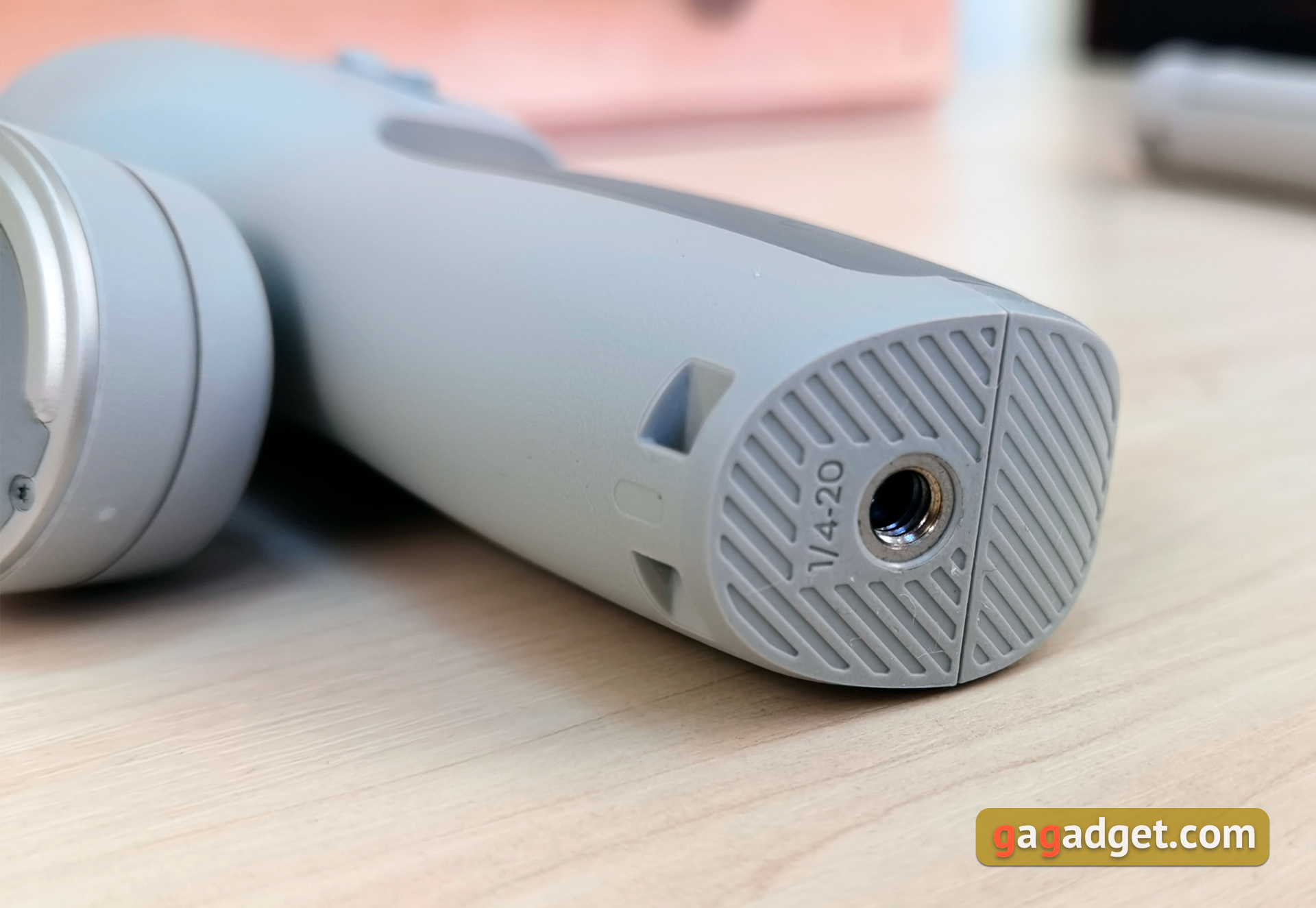
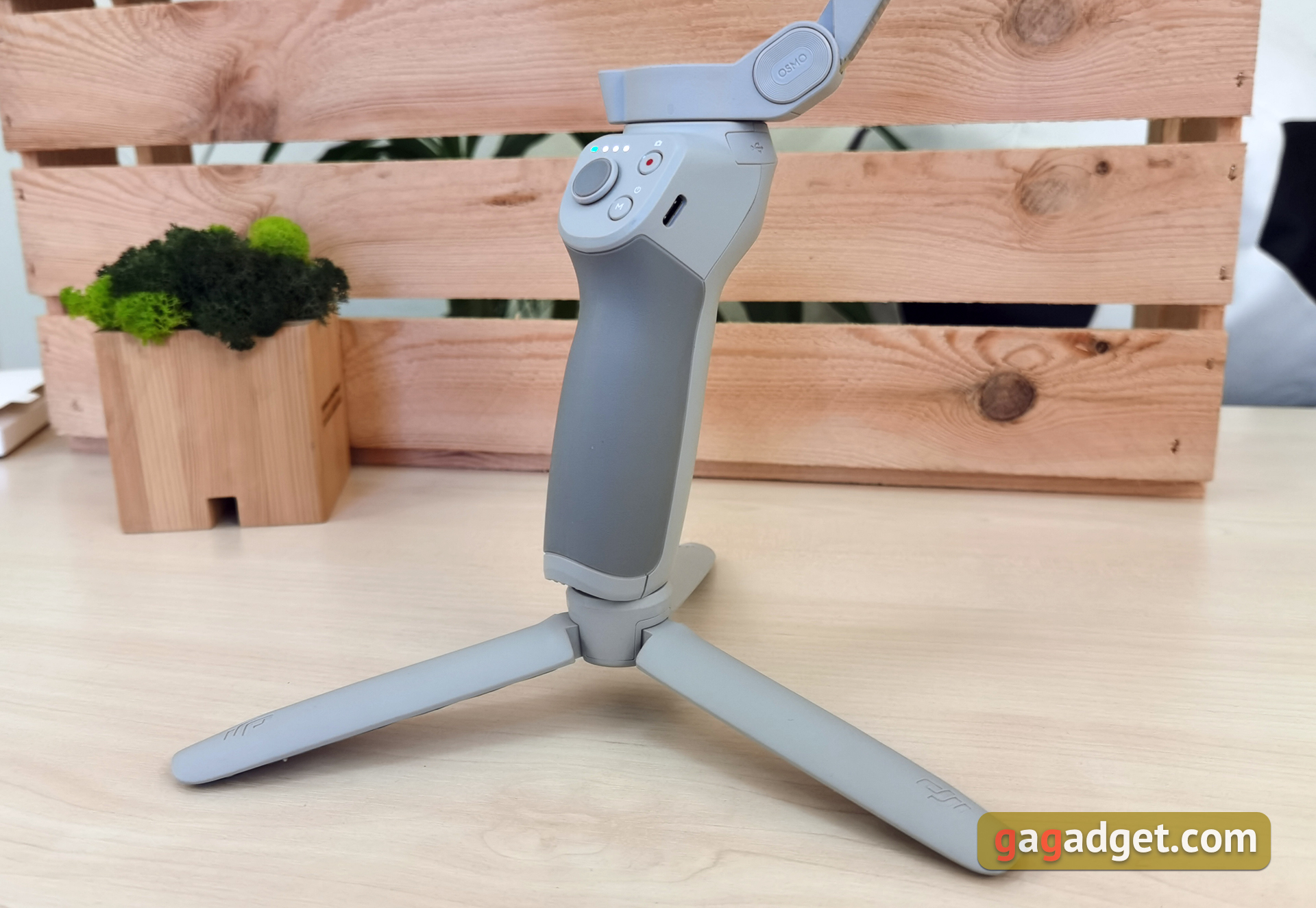
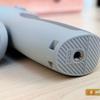
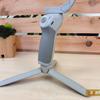
The design is comfortable, compact, and nicely organized. In terms of materials and assembly, traditionally for DJI devices, everything is at its best.
How easy to operate and use DJI OM4?
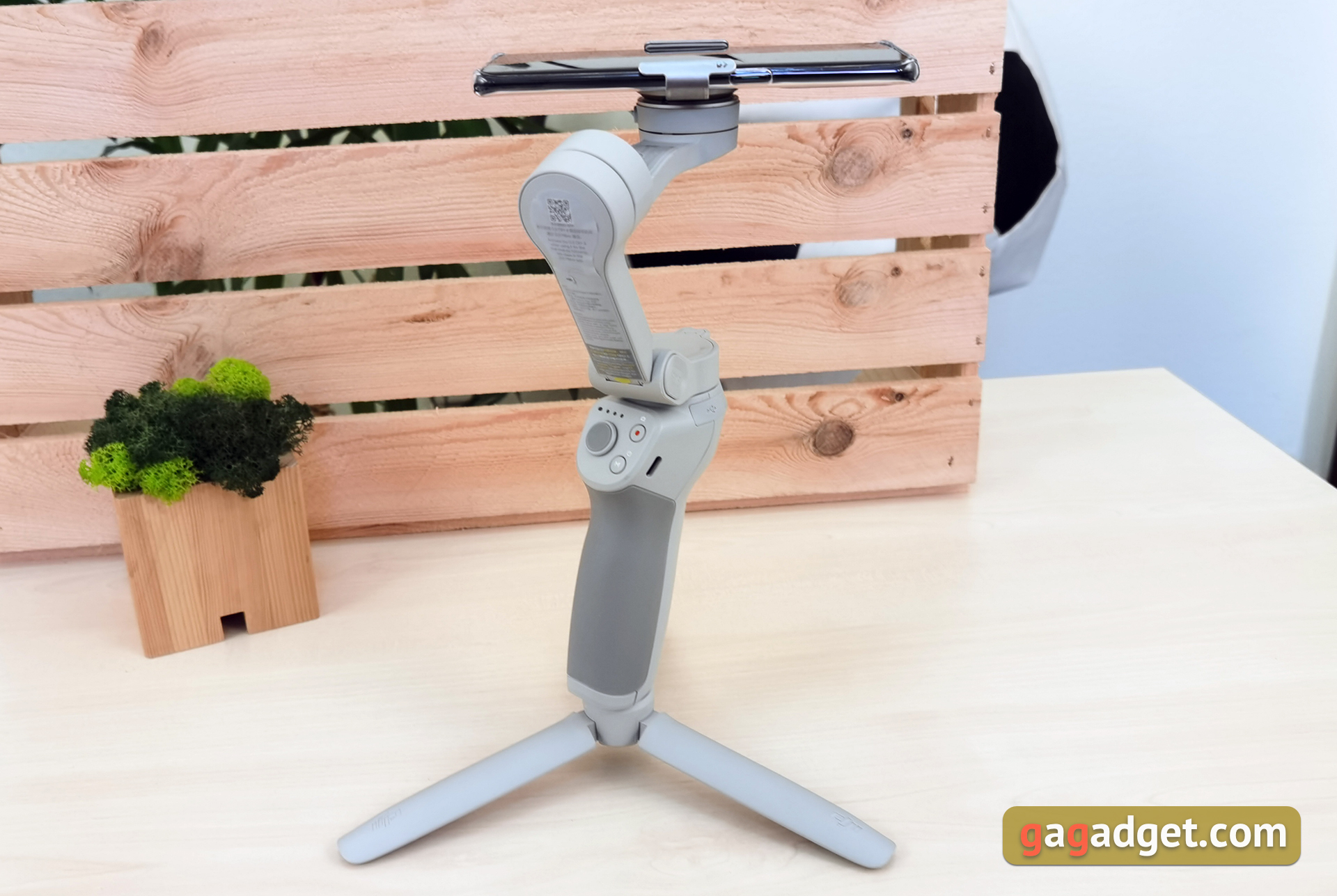
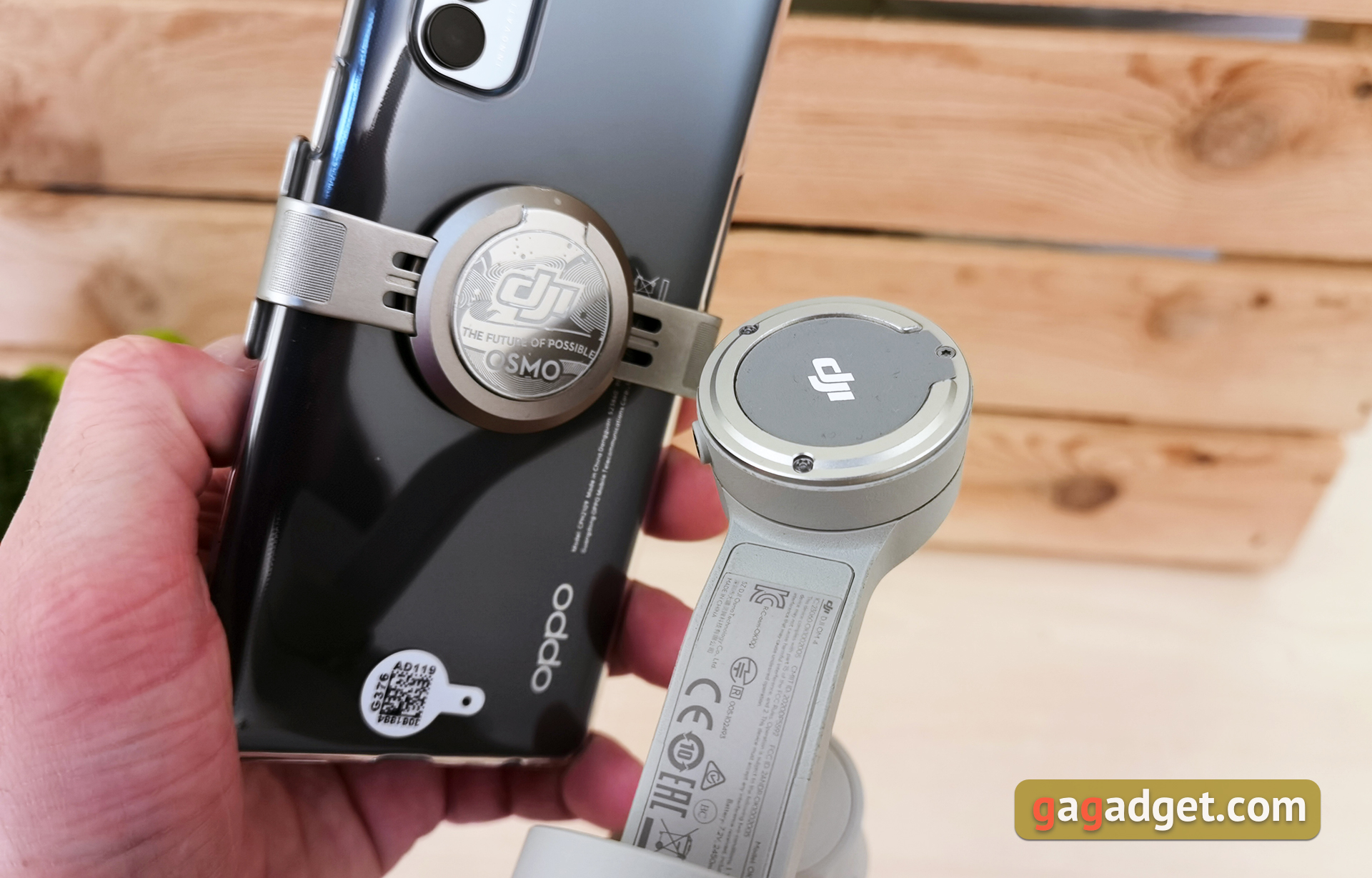
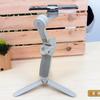

To get started, simply unfold the stabilizer, attach the smartphone the way you want and turn on the stabilizer. On the mounting and mating pads of the mounts there are corresponding ridges, so it will be difficult to mismatch. On the smartphone, this ridge must be directed toward the top end. The magnets are very powerful and accidental dropping of the smartphone is almost impossible. You can tear off a smartphone only deliberately and on purpose.
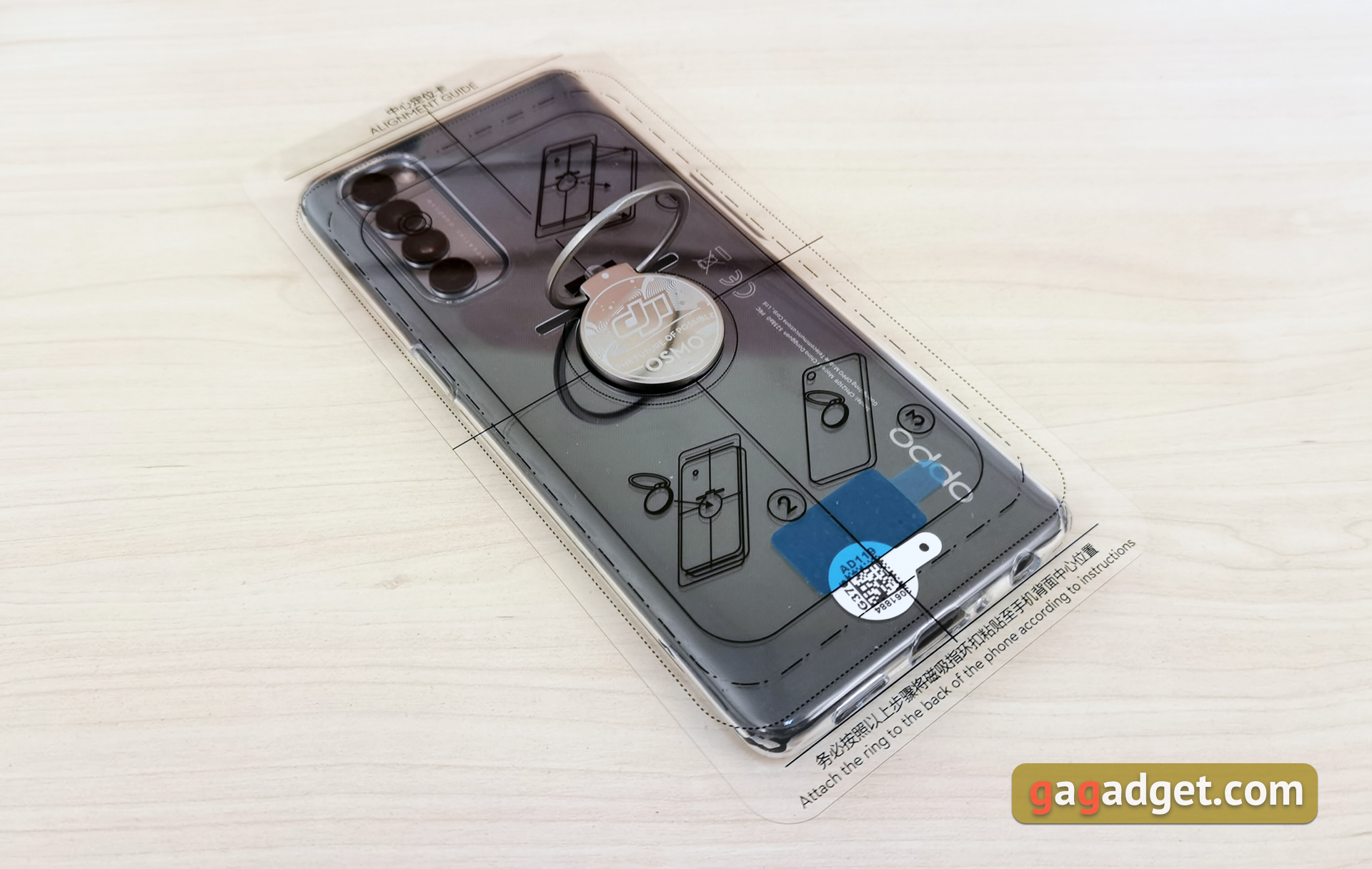
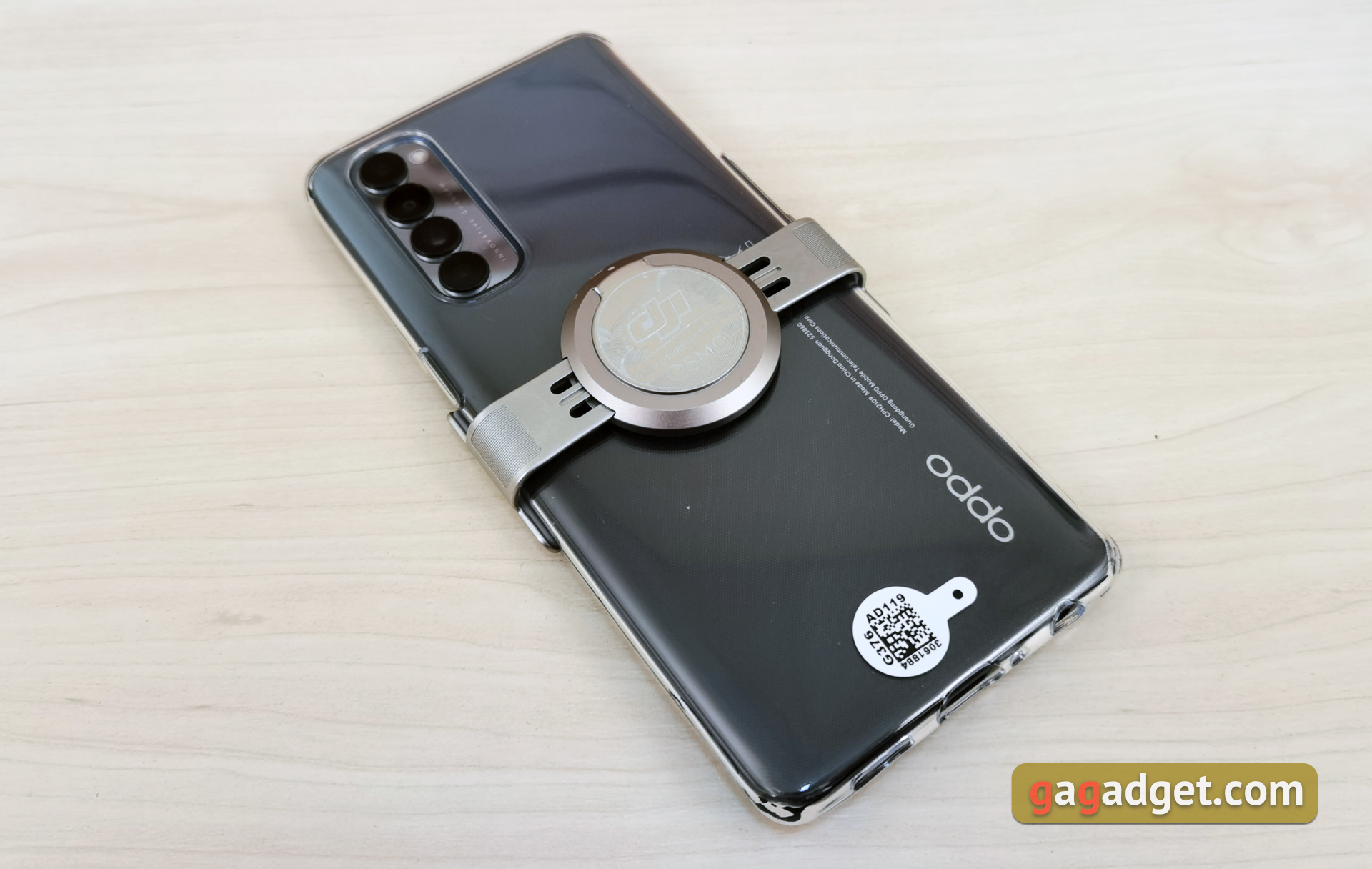
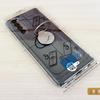
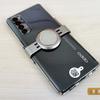
Now let's move on to the controls. When the stabilizer is off, pressing the lower button indicates the charge level. A long press on the bottom button shows the charge level. In working mode, a single press on it switches between photo and video, a double press switches between landscape and portrait positions, and a triple press switches to standby mode. Everything is clear with the joystick. The third button is responsible for shooting. Long pressing it in the photo mode allows you to perform burst shooting.
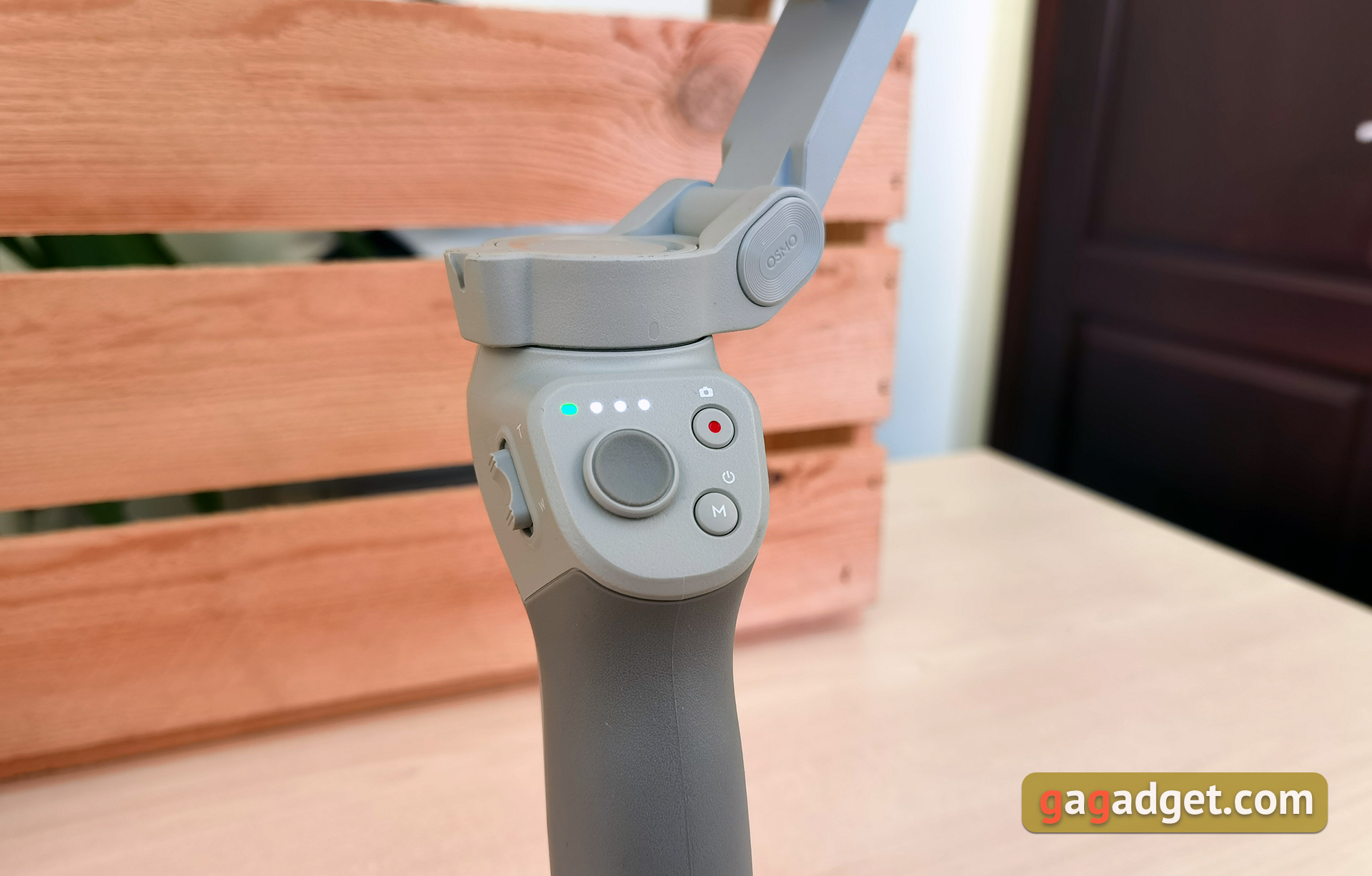
The trigger also has several functions. Press and hold turns on stabilizer lock mode. One press starts or stops Active Tracking, a double press centers the stabilizer, and a triple press switches between the main and front cameras. A short press and then a long press activates sport mode.
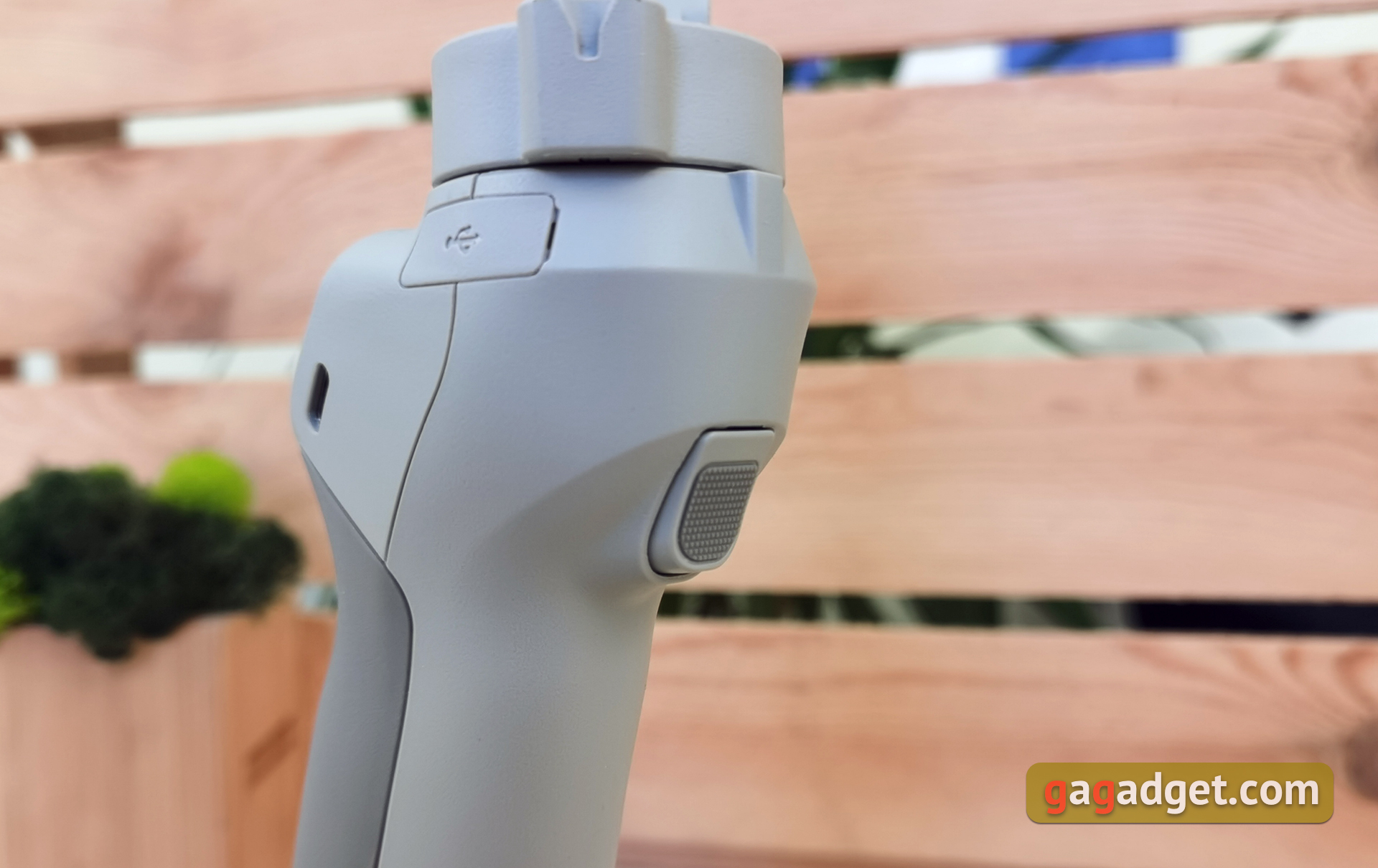
All other settings and options are already made with the DJI Mimo app. At this point there is a nuance: yes, as a simple handheld stabilizer DJI OM4 will work with virtually any smartphone. But the functionality differs dramatically from model to model. The official website has a list of compatible smartphones and a table with supported functions for each specific model. This does not mean that the stabilizer will refuse to work with a smartphone that is not on the list, but the functionality will be limited. For example, it will only support the main camera and FullHD video at 30 frames per second, although the smartphone itself supports 4K. Judging by the list, Apple, Samsung and Huawei smartphones (with P40 Pro mostly and tested DJI OM4)have the widest opportunities.
The application can be roughly divided into two parts.
The first one is general, with videos posted by owners of DJI gadgets, videos and text instructions on how to use the stabilizer and a simple video editor.
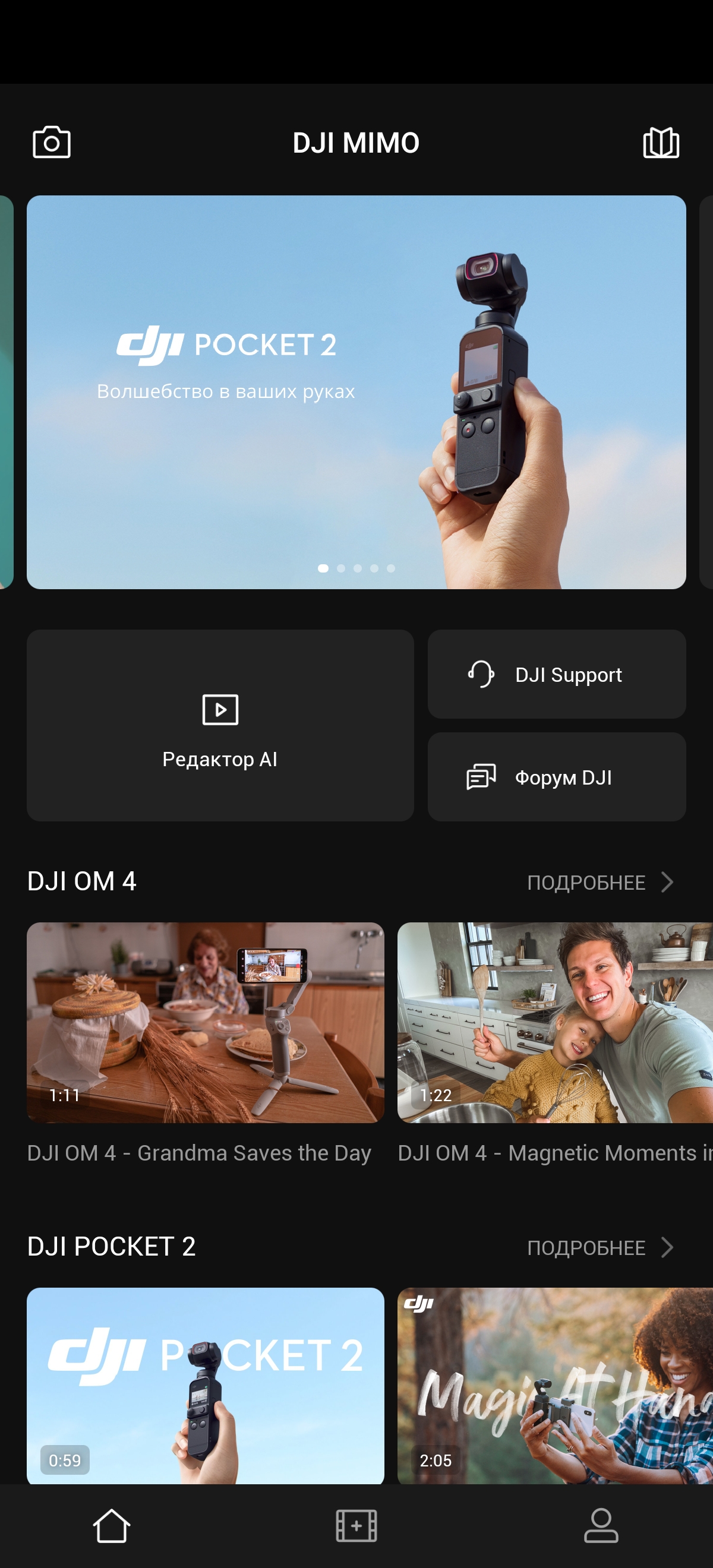

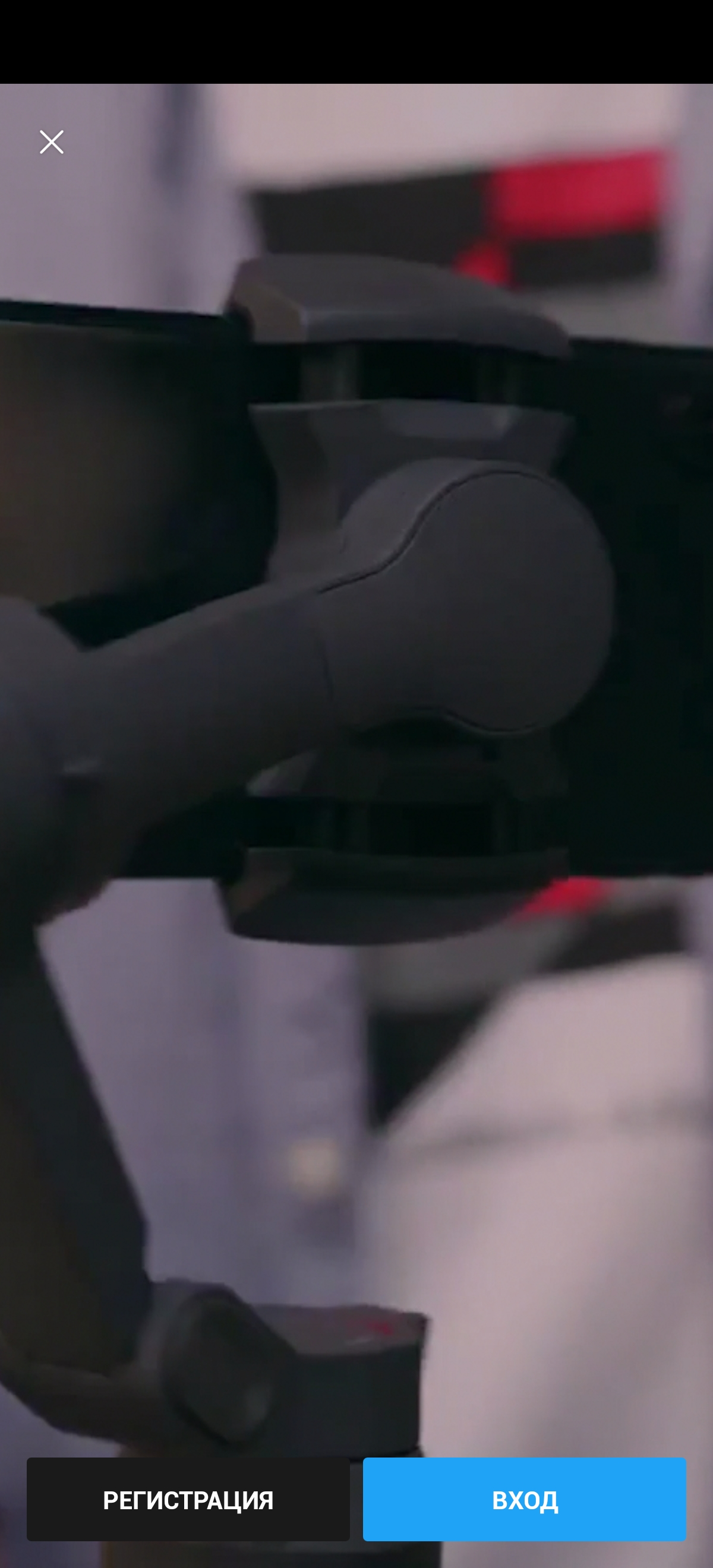

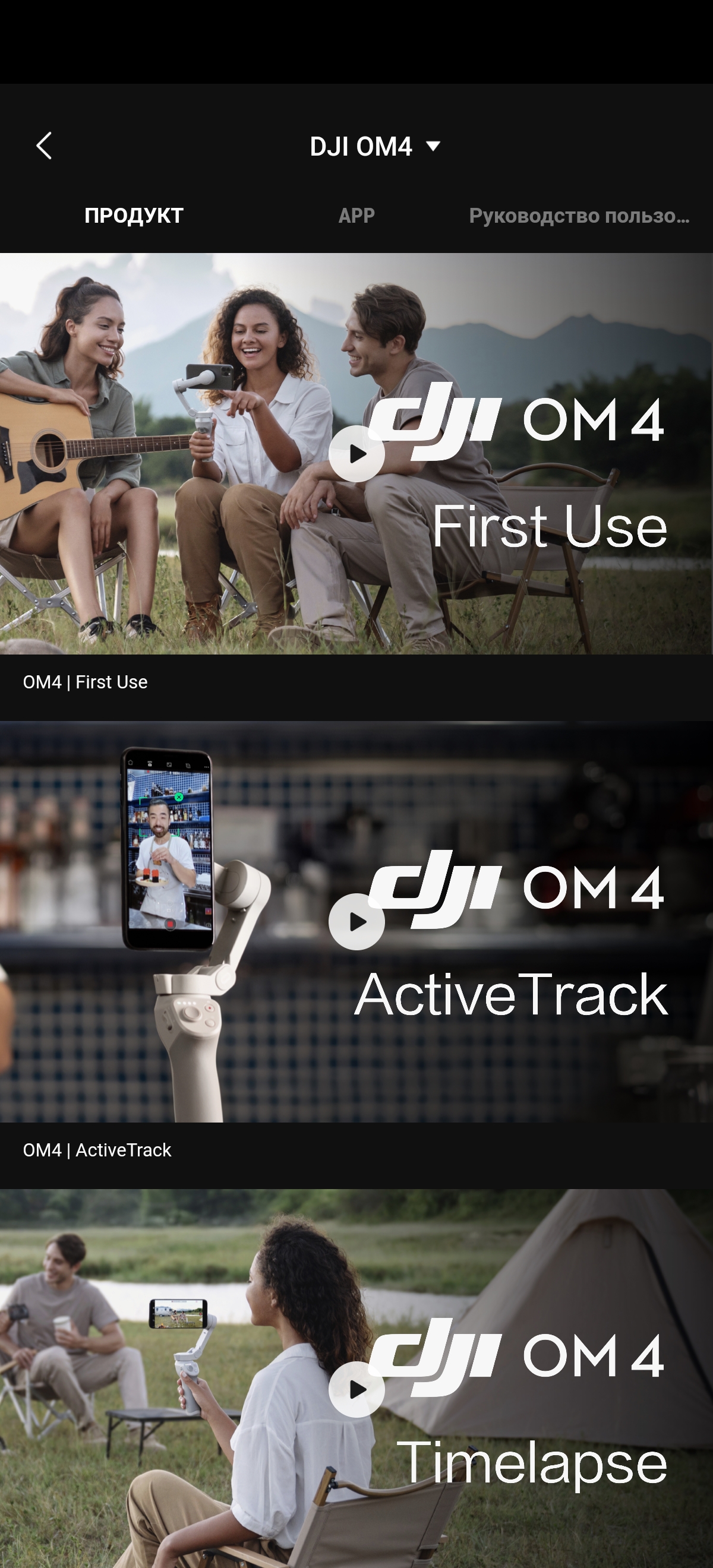
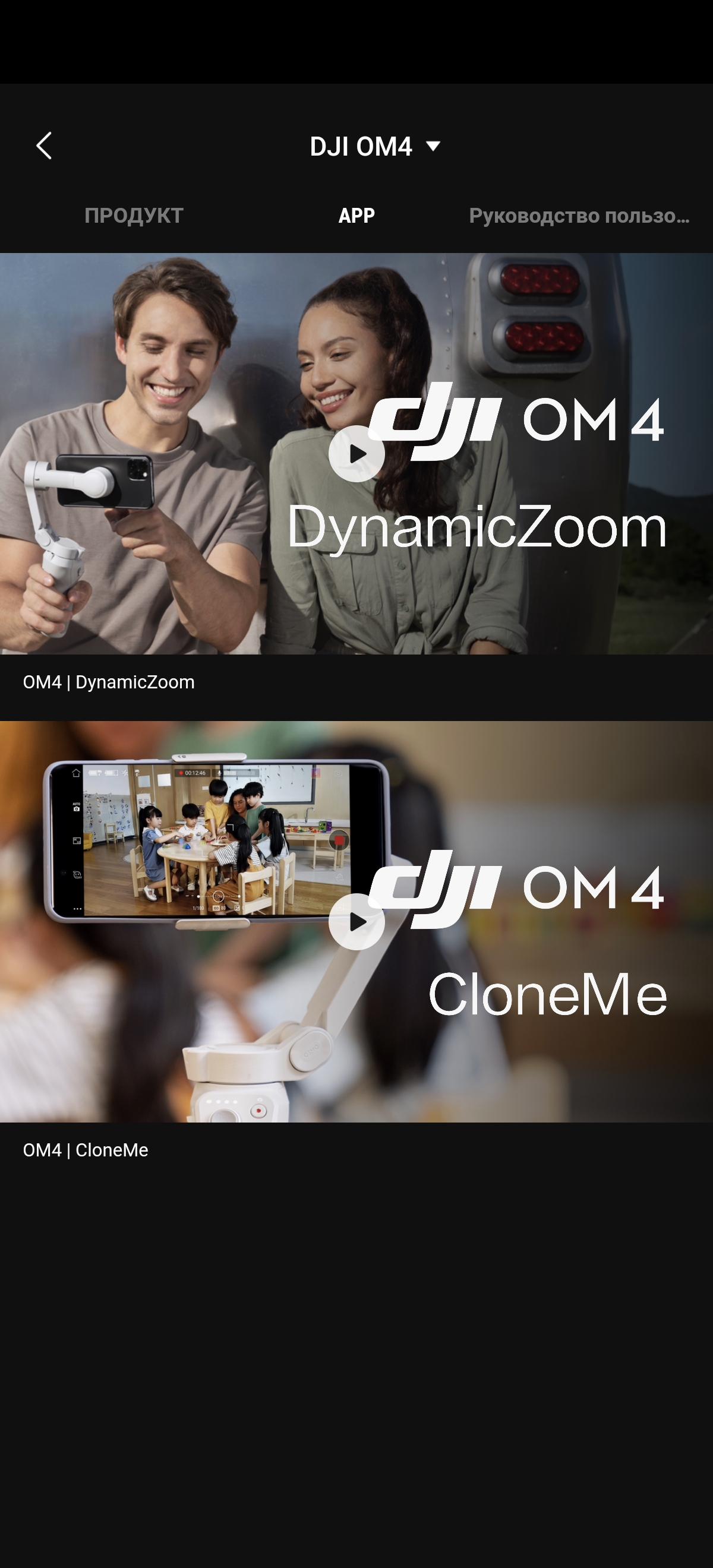








The second part is directly shooting and adjusting the camera and stabilizer. The interface resembles a standard smartphone interface: "carousel" with shooting modes, zoom settings, white balance, flash, switching between the main and front cameras, video resolution and frame rate. With Huawei P40 Pro, the maximum resolution is 4K, 30 FPS, although the smartphone itself is able to shoot 60 FPS. But the app is able to switch between cameras. For example, in case of the OPPO Reno4 Pro DJI MIMO we could only use the main camera, you could not switch to wide shooting mode. From the interesting features - there is a gesture control. Just a treasure for bloggers: With a gesture you can start recording video, and the stabilizer will follow the person in the frame during the recording. So you can film yourself without any extra help.
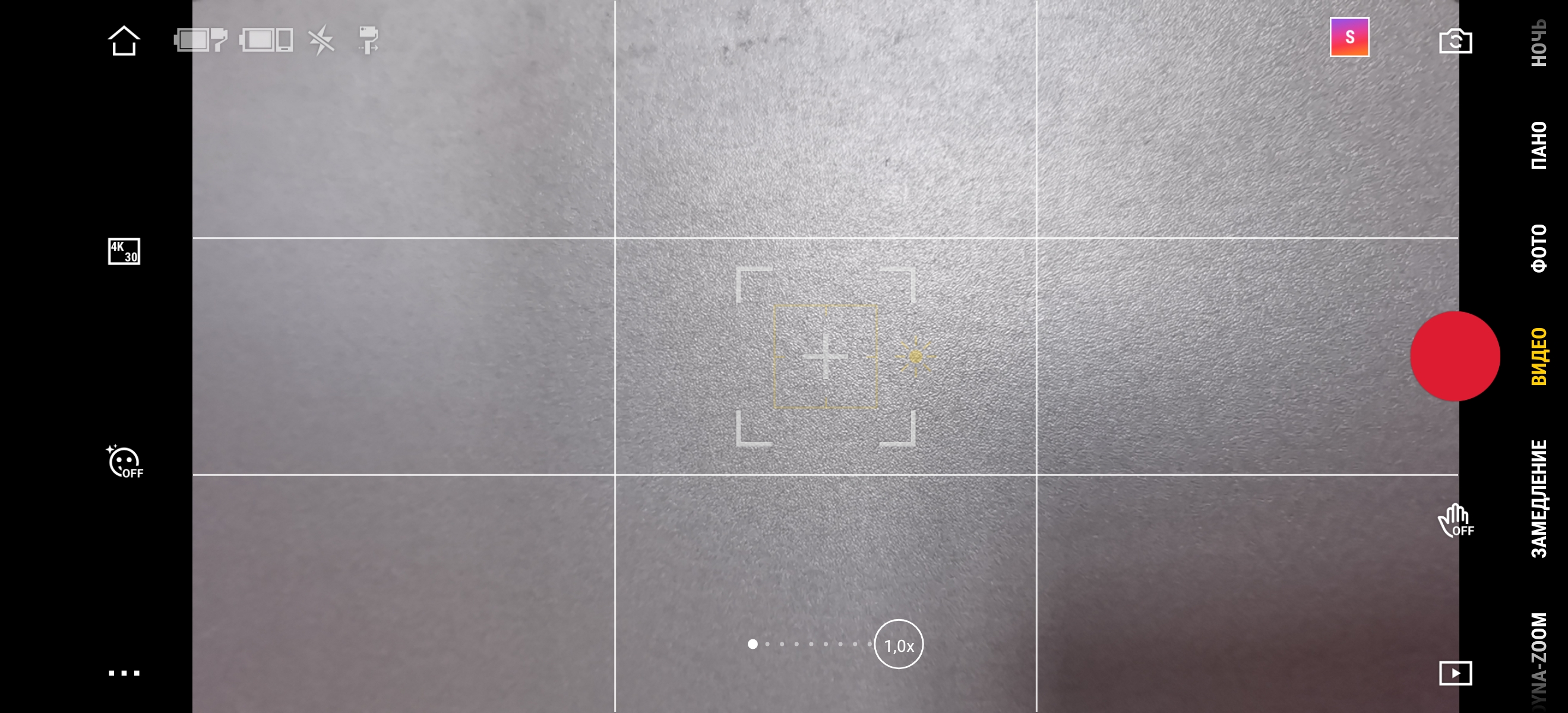
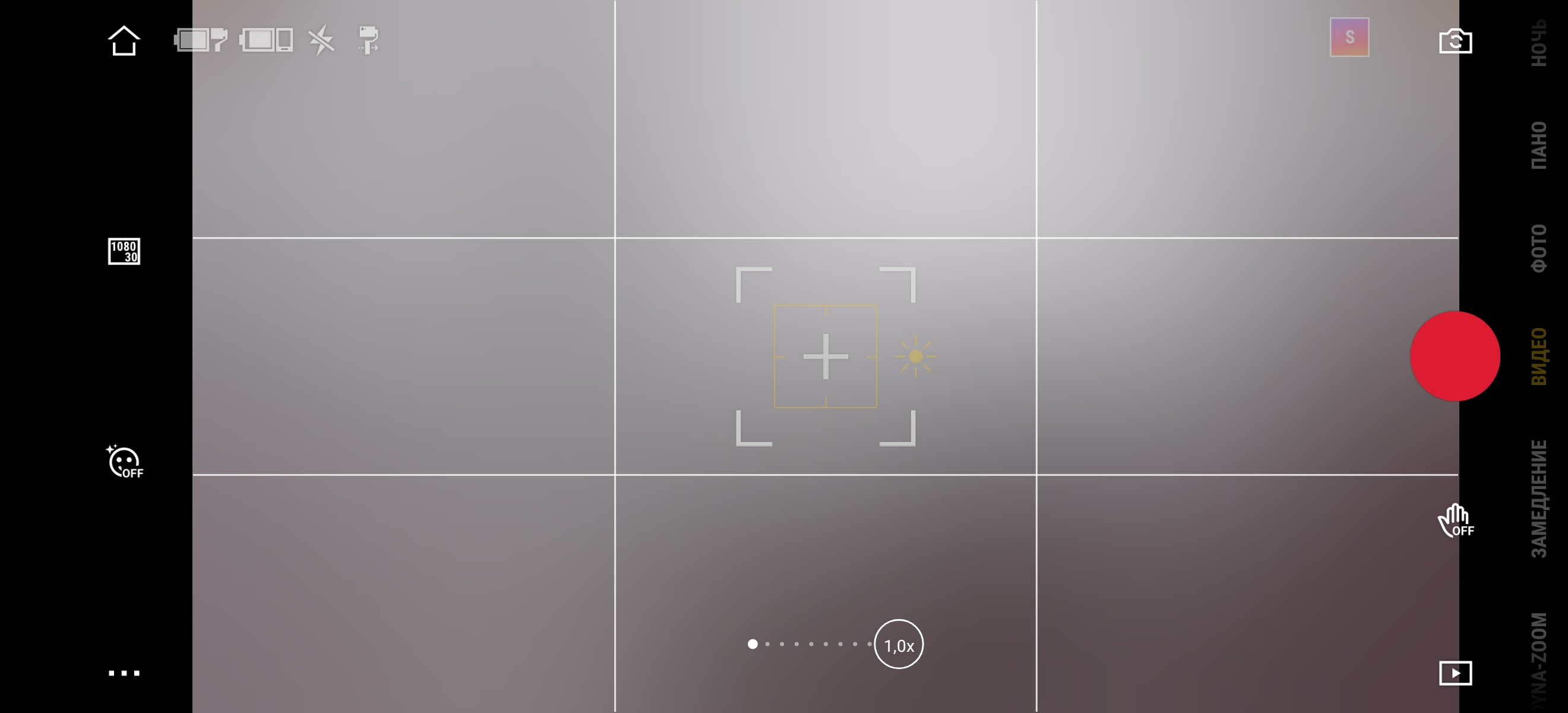
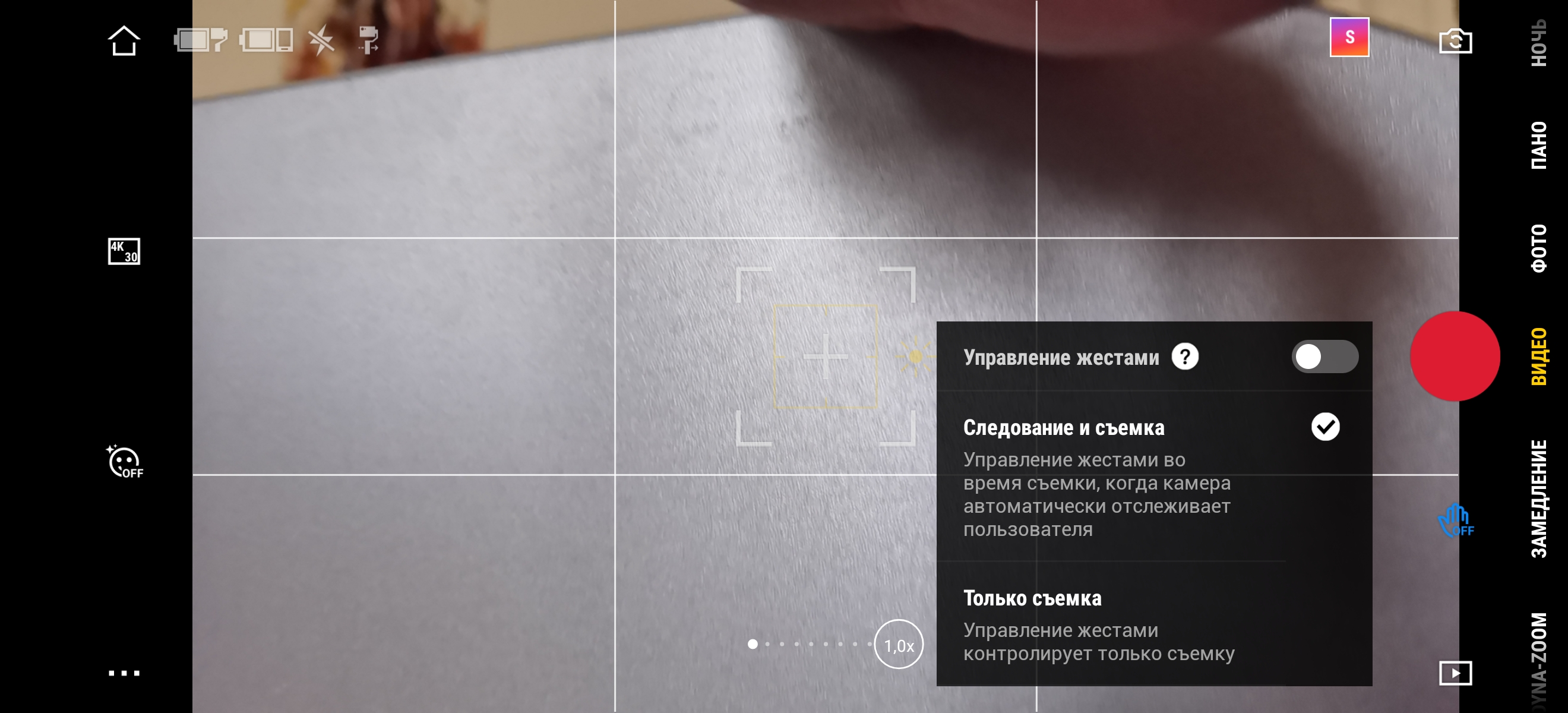

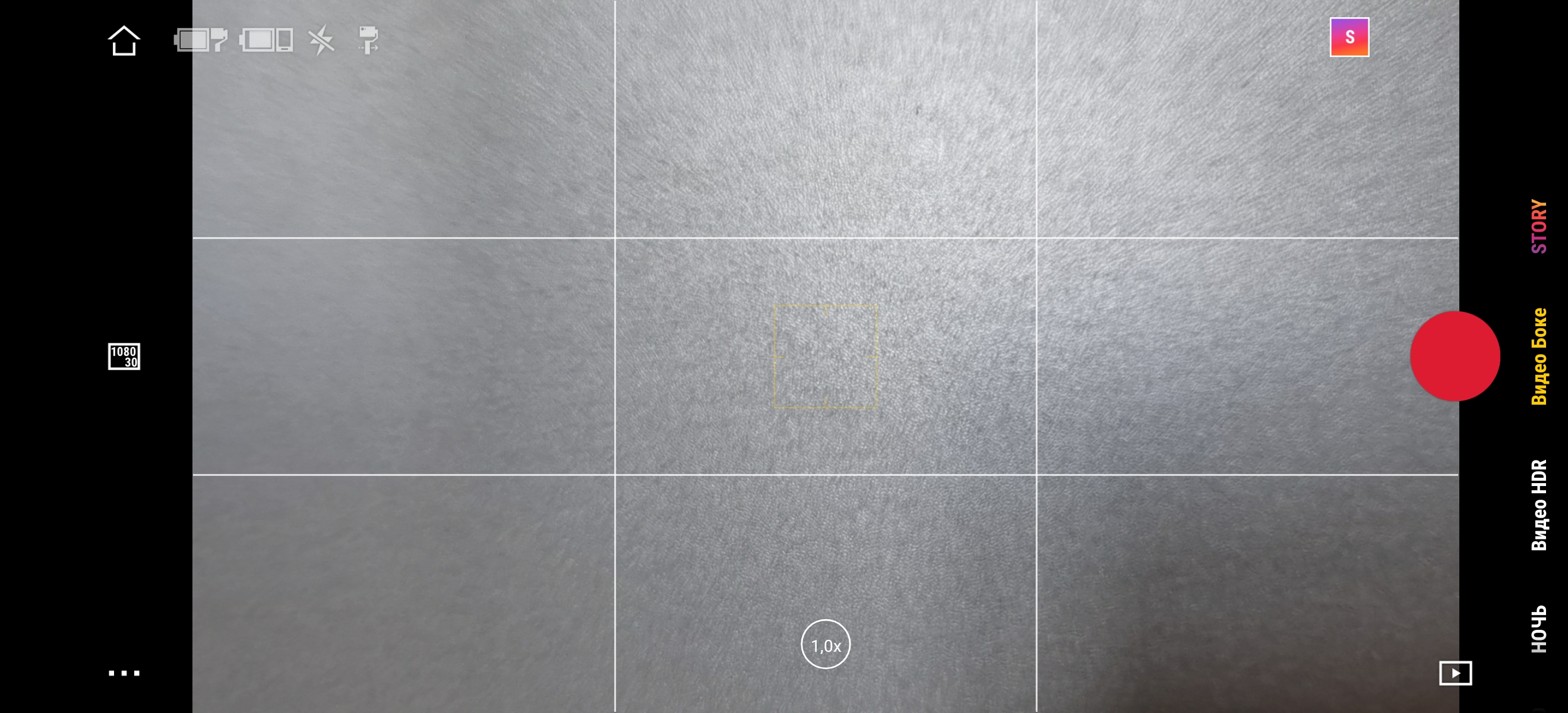
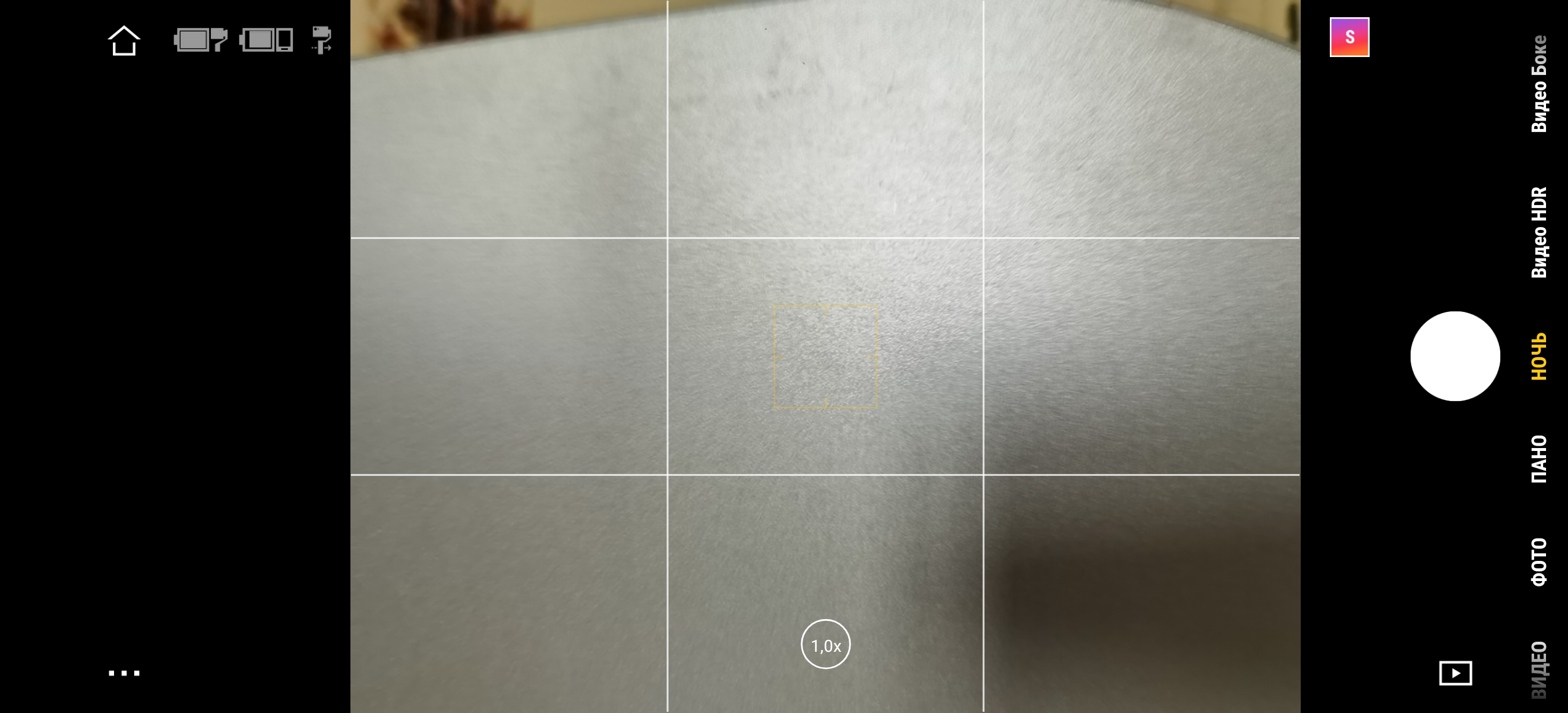

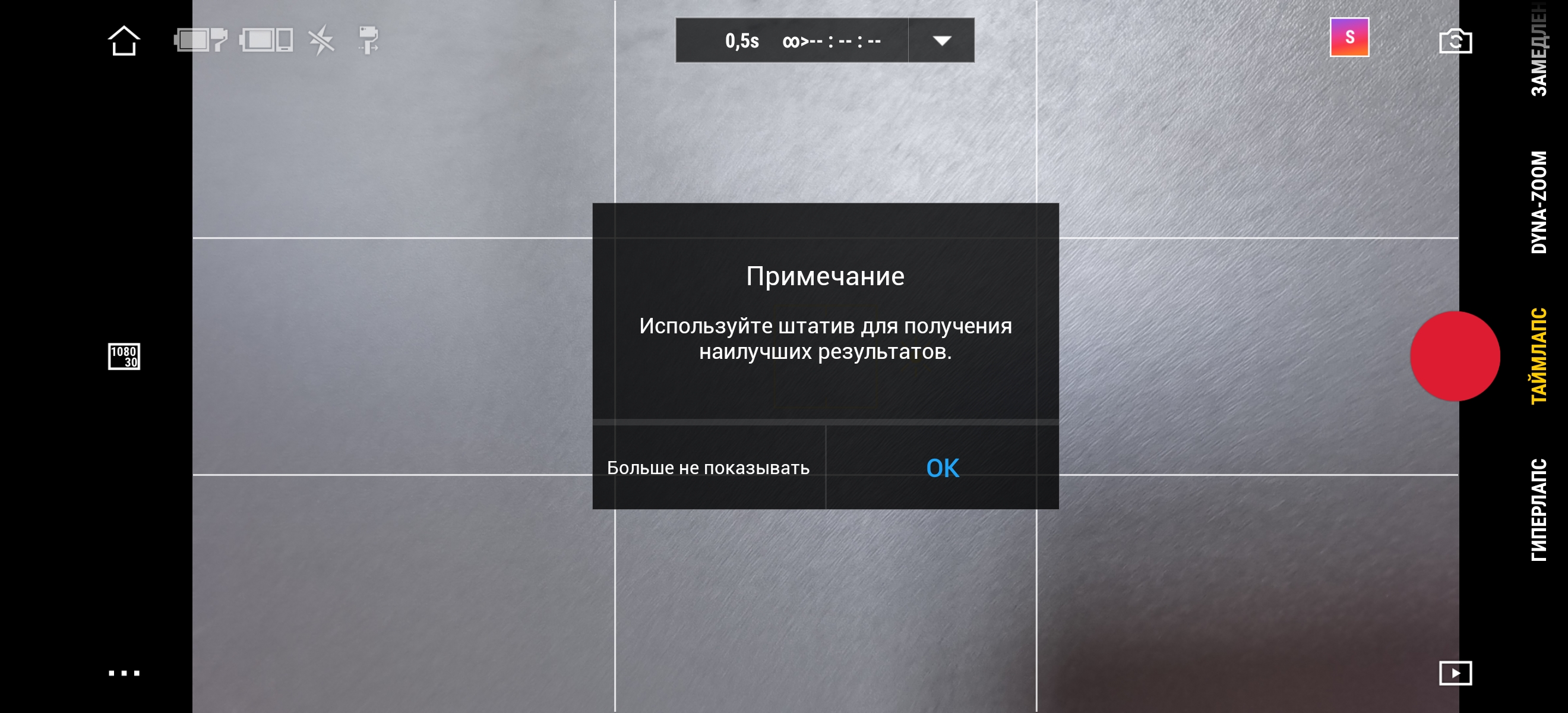
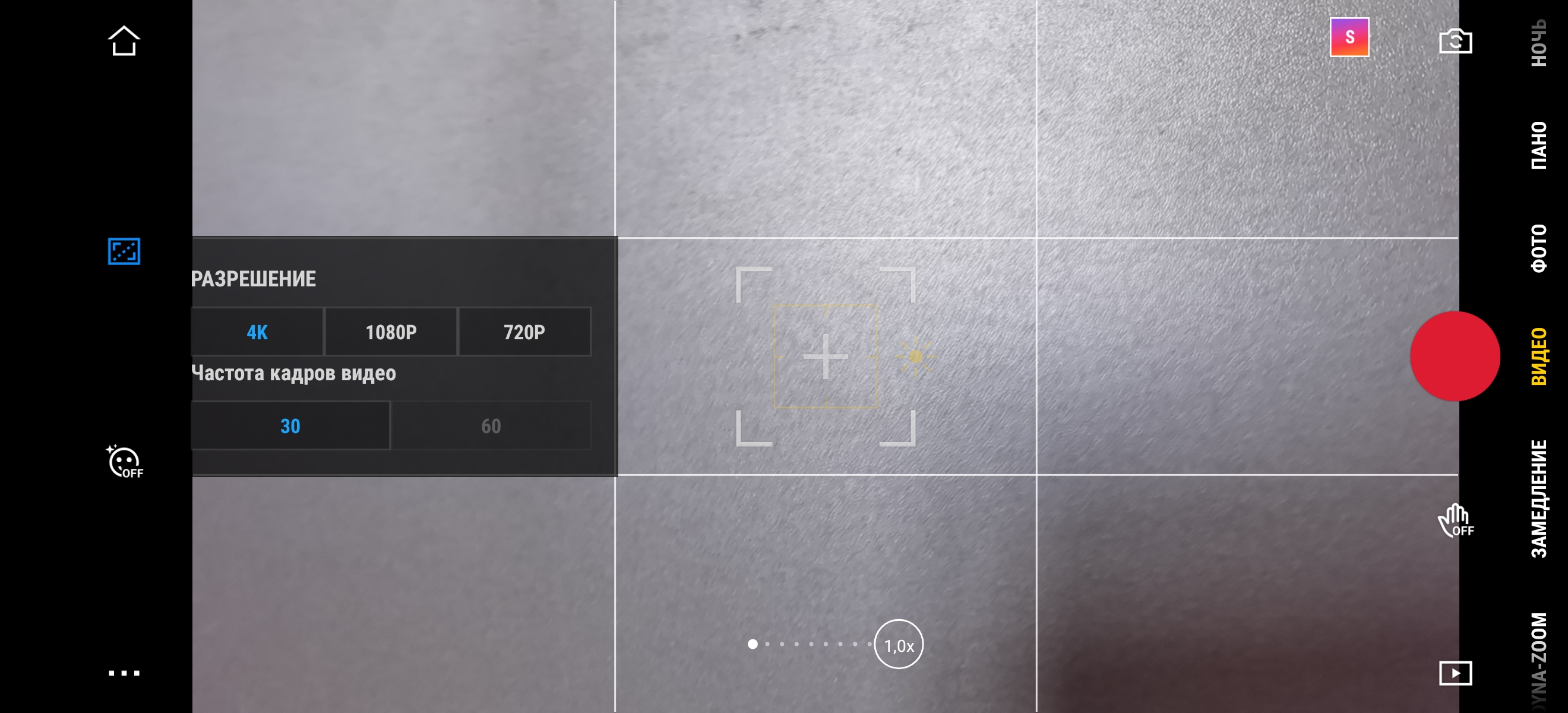
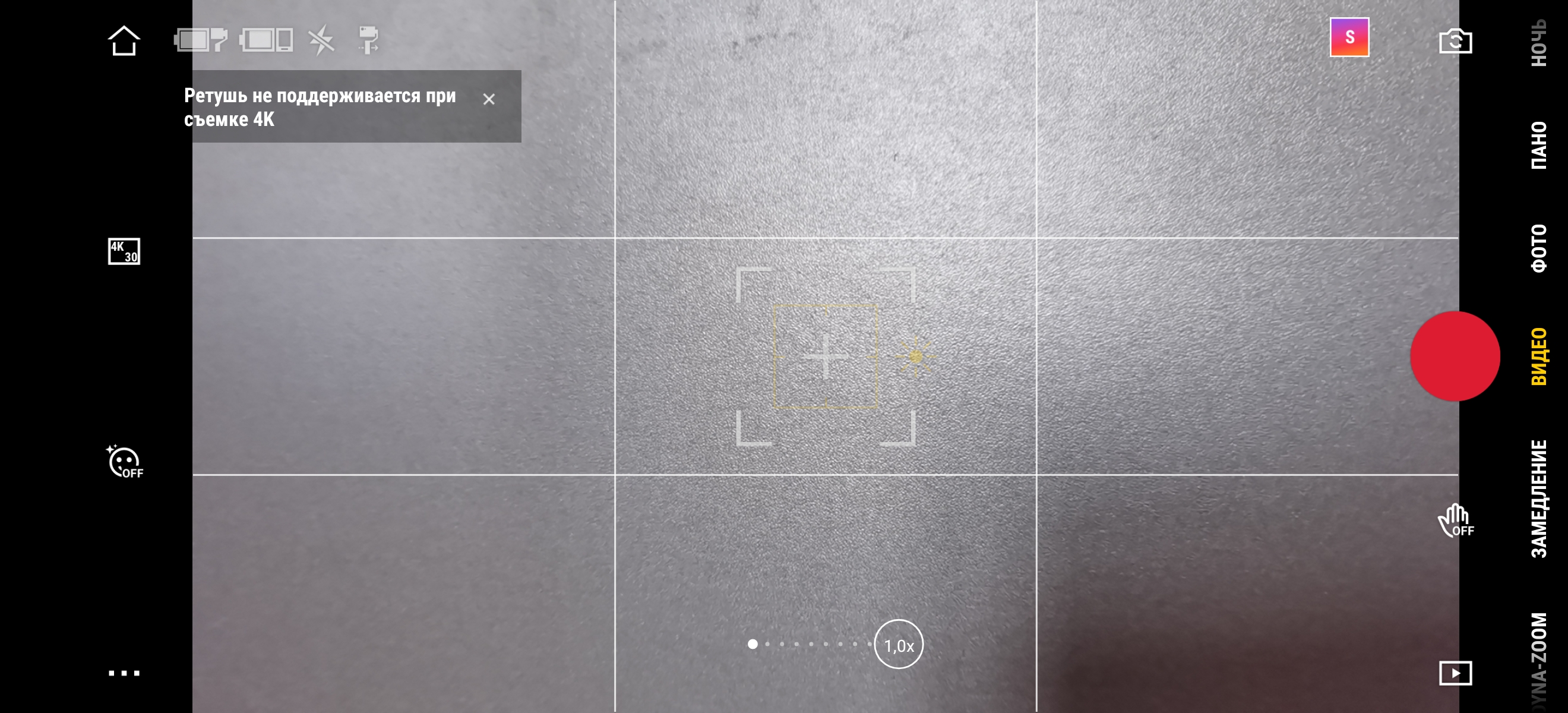

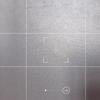

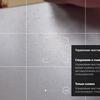

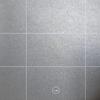



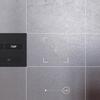

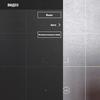
The stabilizer operation settings are placed in a separate menu item. You can select the tracking mode (actually the mode of the stabilizer): with locking by tilt, by rotation axis, from the first person (smartphone moves smoothly following the movements of the user) and a circle (rotation around an axis perpendicular to the smartphone screen). You can also turn on the sport mode, adjust the zoom speed, sensitivity, direction and inversion of the joysticks and calibrate the stabilizer. In case you see the Dutch angle, there is manual adjustment of the angle.
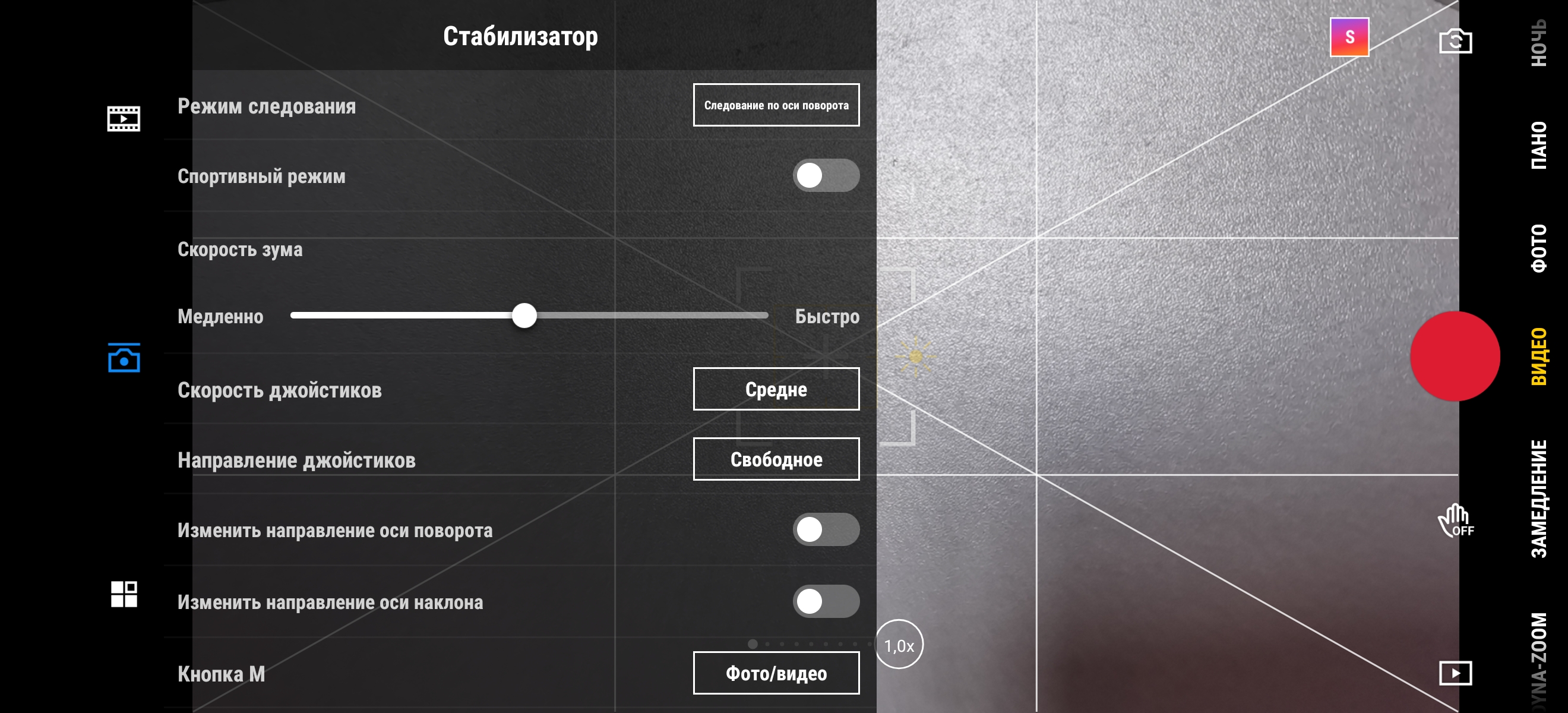
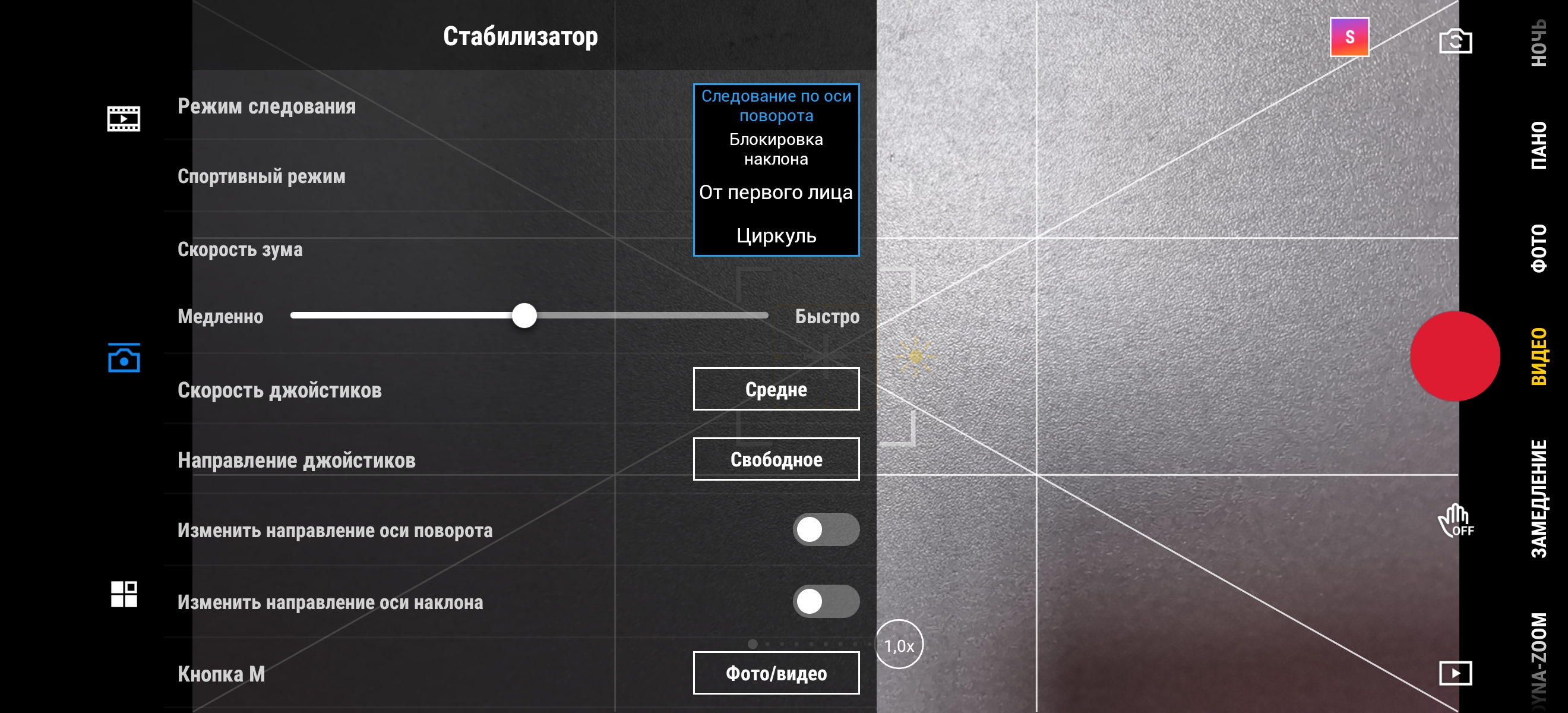
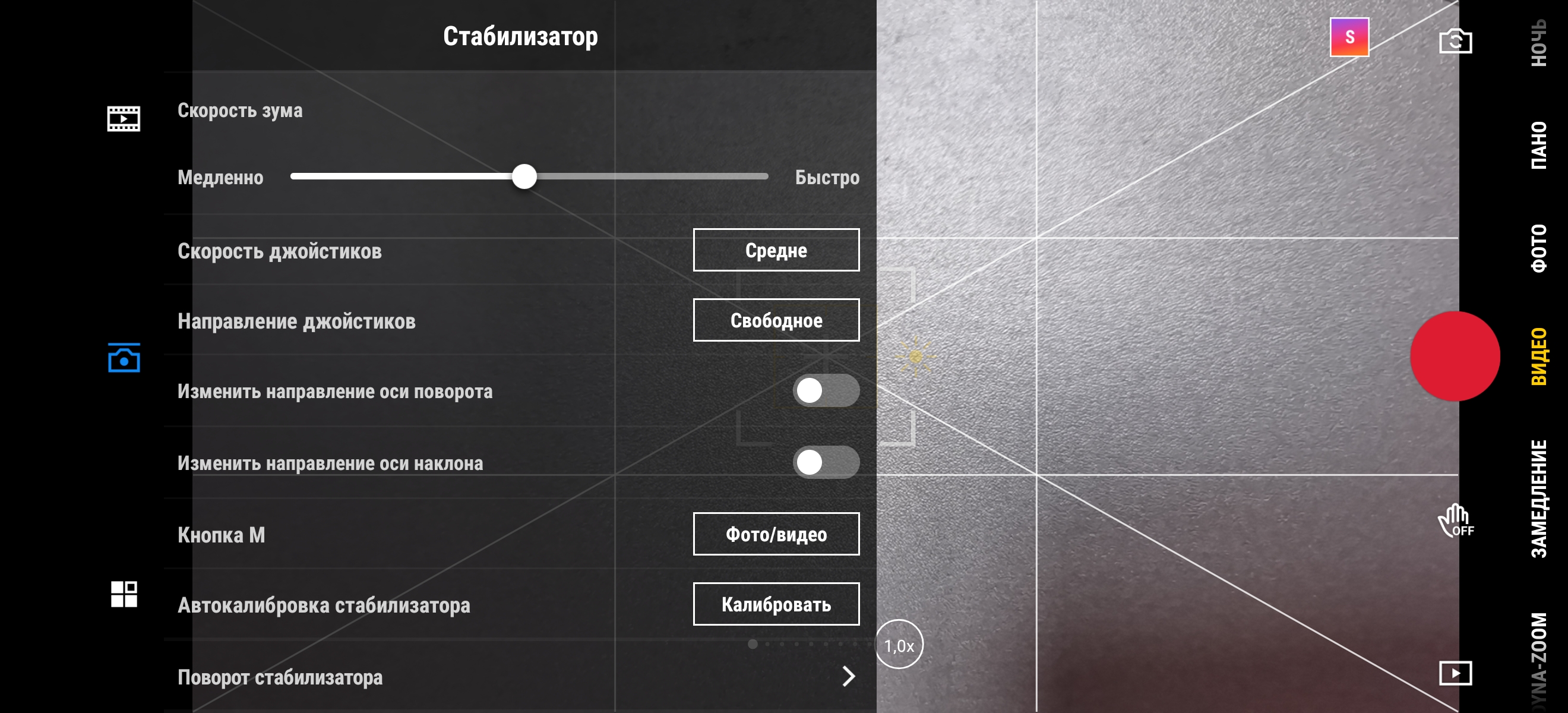
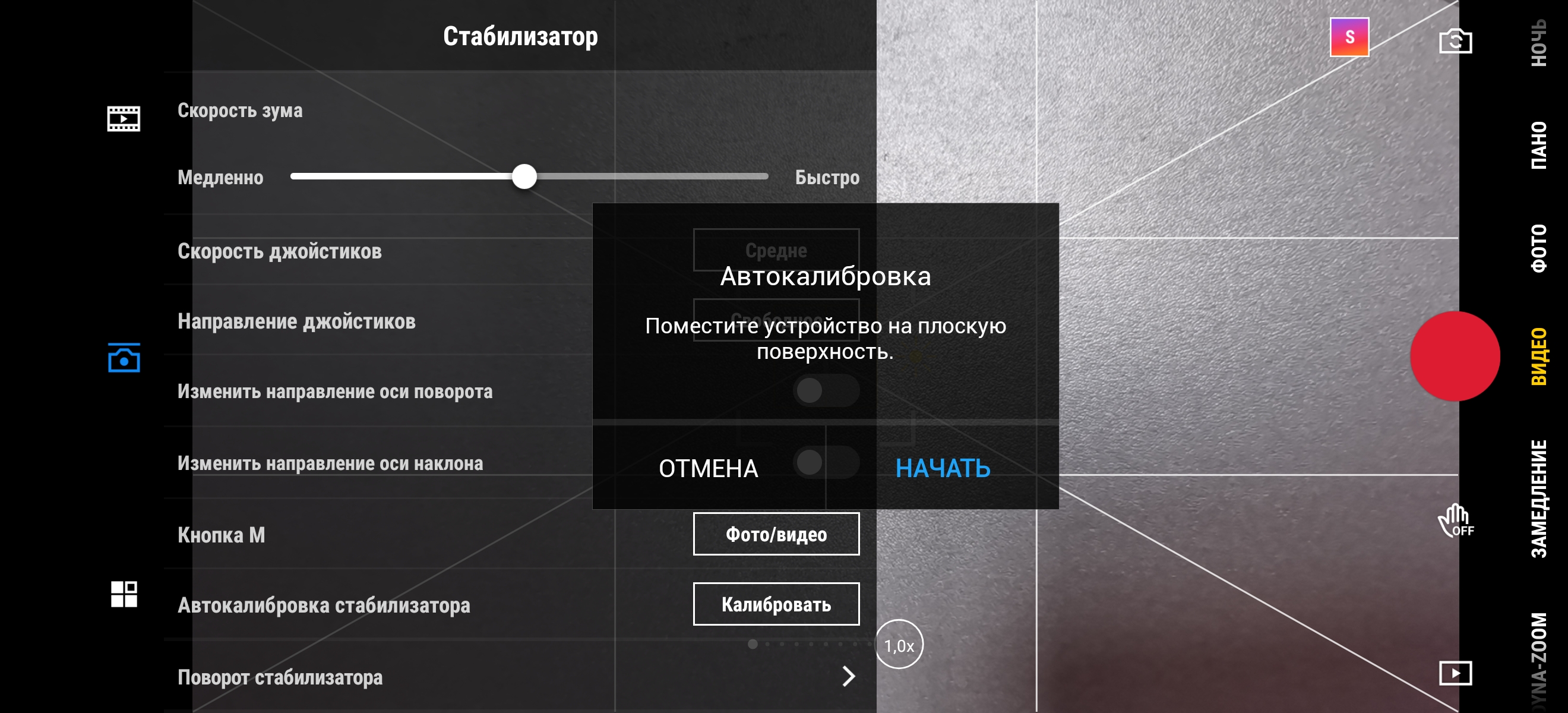
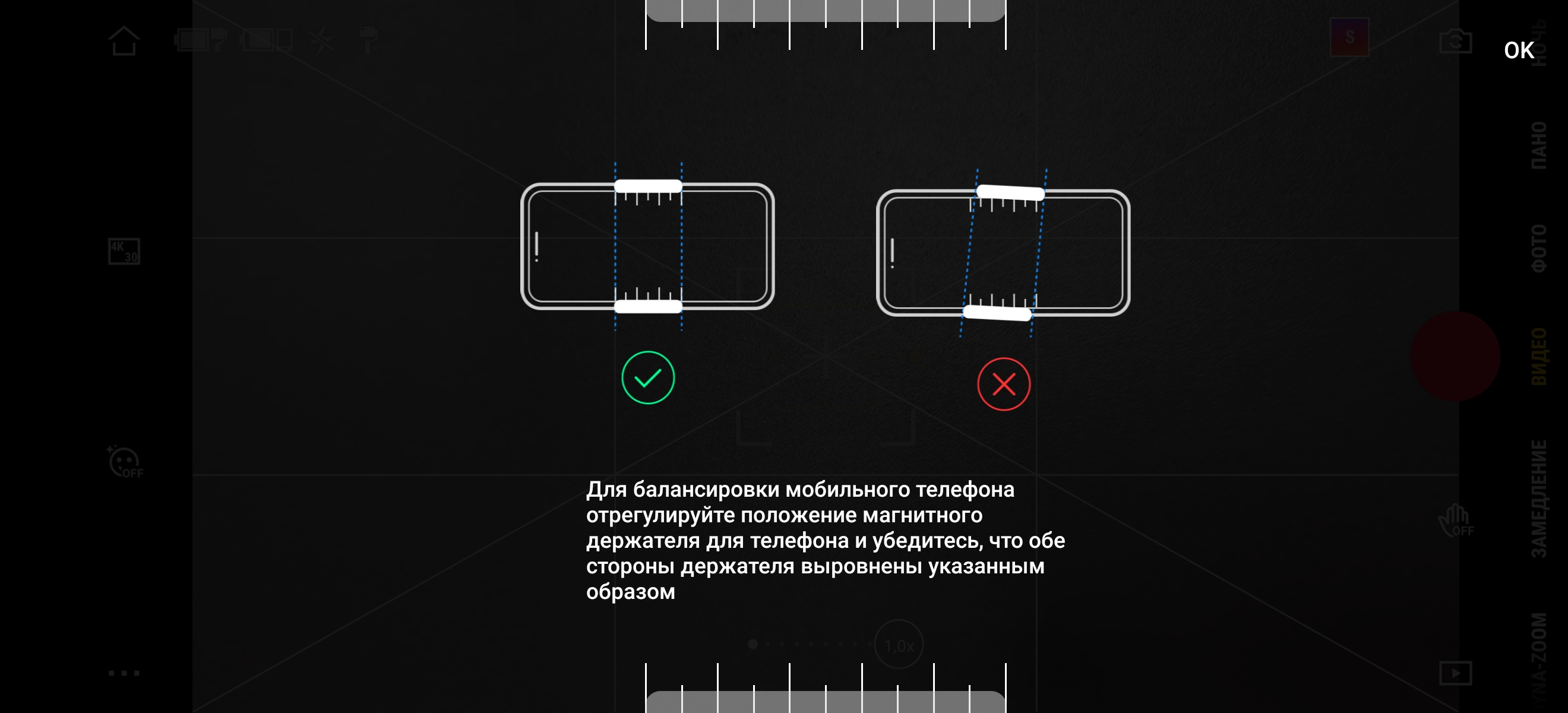
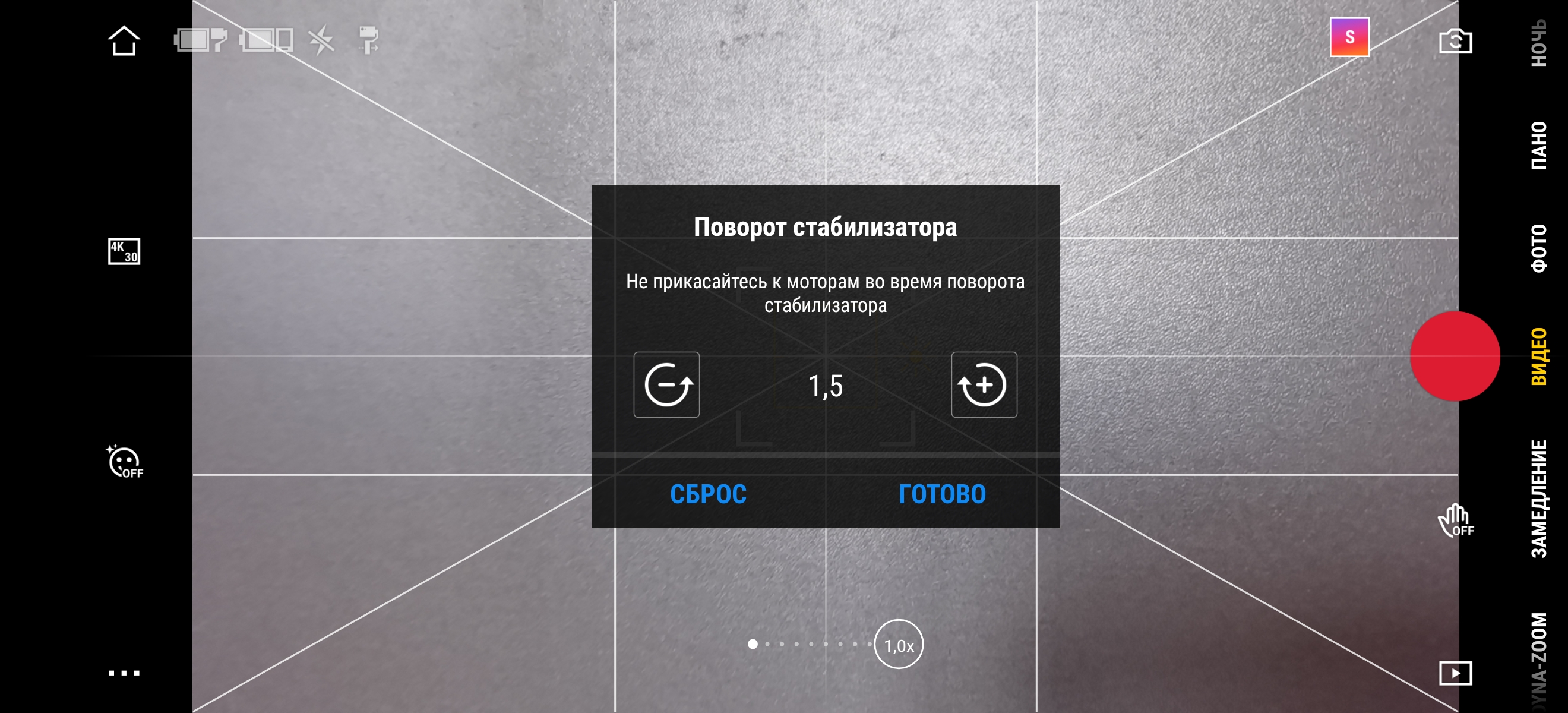
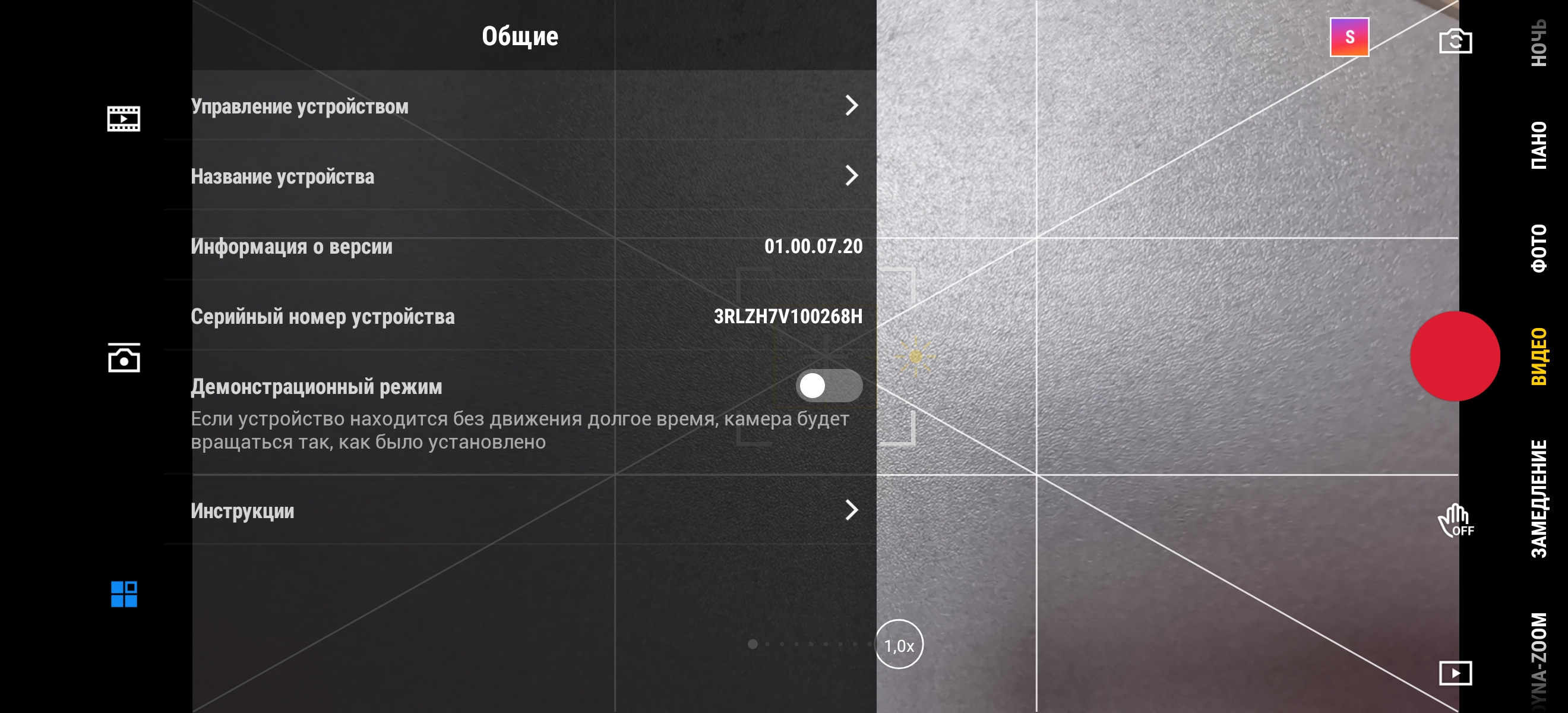

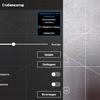


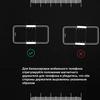
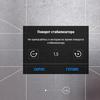
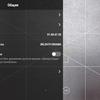
How does DJI OM4 work and shoot?
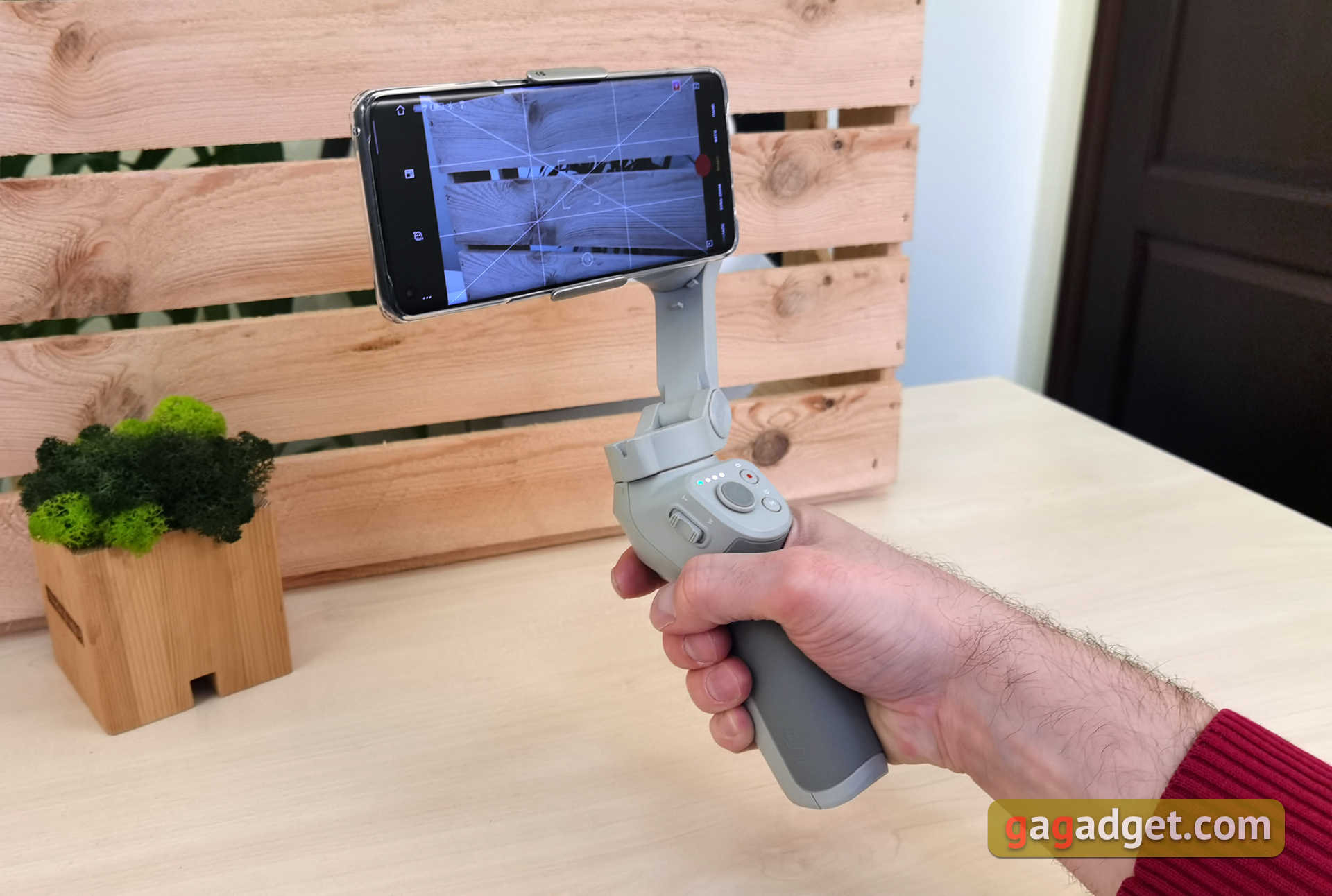
As written earlier, the basic version of the stabilizer works with any smartphone. The main basic purpose of the stabilizer is to get rid of shaking when shooting video and make your movements smoother. Especially when shooting on the move: on foot, on a bike, skateboard, car. And in general, the stabilizer is extremely useful if you make any shots where you need to move your smartphone when shooting.
After a relatively short time spent experimenting and practicing, you can take really interesting shots with the DJI OM4. The Active Track 3.0 object tracking system also works very well and rarely loses an object. Within reasonable limits of object speed, of course. According to DJI, the algorithms are able to find the selected object even if it disappeared from the view for a split second.
In addition, the DJI OM4 has a bunch of additional features and modes, including Story mode with prepared templates if you need to shoot several short videos, with effects, background music, and glue everything into one video. Of course, there is a slow motion mode.
And useful things for photos. For example, night shooting with long exposure (which is easy to do with a tripod), different panorama modes: CloneMe, it is a panorama with a time delay, so that the user was able to move to another point. As a result, when gluing one shot you get one person twice. And the more traditional 3x3, 240°.
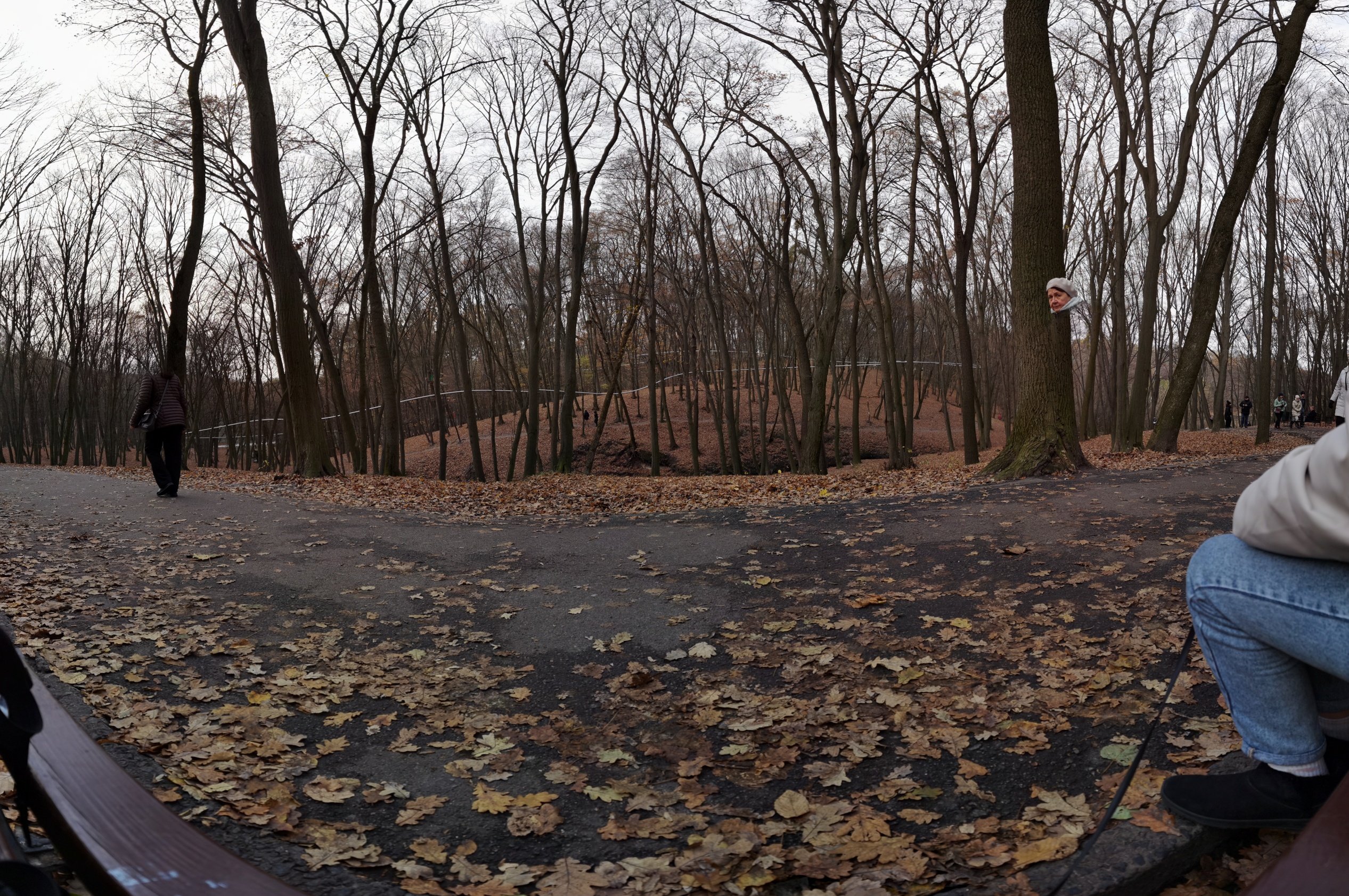

Motion Timelapse or Motionlapse made an impression when I was using the DJI Osmo Pocket. The DJI OM4 also has this feature. You can set up a four points route along which the camera will move, take photos at certain intervals, followed by compiling a video. You can set the frequency of photos and the duration of the process, the screen will immediately show the duration of the final video.
Hyperlapse:
One of the new features is Dynamic Zoom, also known as the Hitchcock Effect, Vertigo effect, or Dolly Zoom (or some other names). An optical effect in which objects in the foreground remain in place, while the background begins to move backwards or forwards. This is an unusual thing, and in the original it is done by moving the camera itself while scrolling the zoom lens.
The DJI OM4 does a great job with its main task as well: the stabilizer takes care of shake and sudden movements very well indeed. But the second major advantage of the DJI OM4 is that it has an abundance of different modes and functions that you can and should experiment with. Yes, the stabilizer won't make you a "Hollywood level" cameraman at the push of a button, but with some practice, you can shoot some really cool stuff with the DJI OM4.
What about DJI OM4 battery life?
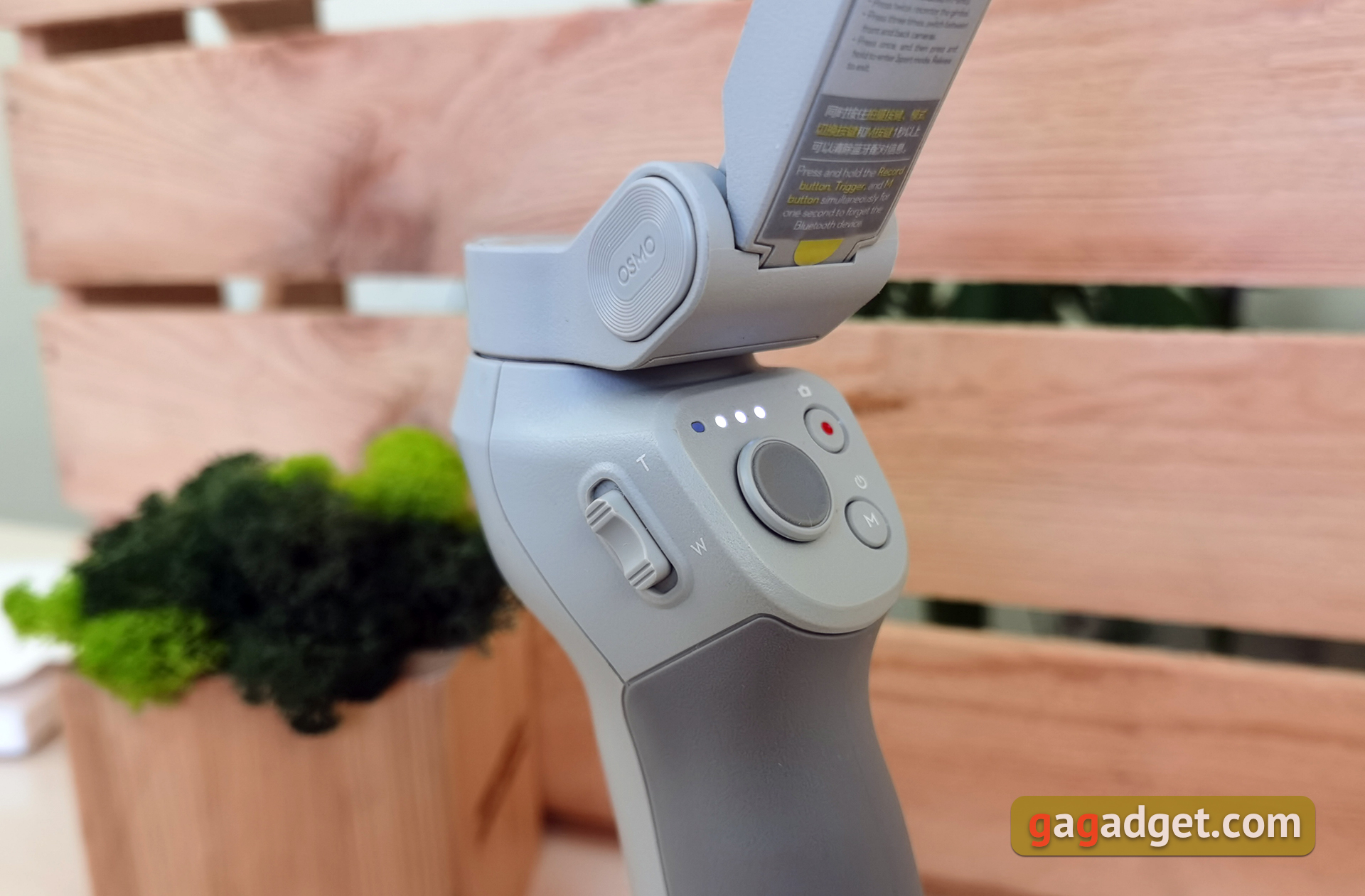
The stabilizer is powered by a 2450 mAh battery. A full charge from a standard 10W charger takes 2.5 hours. DJI claims 15 hours of battery life on a single charge "under ideal conditions". In real life, the operating time depends very significantly on a huge number of factors: the weight of the smartphone, how accurate the balancing is, what shooting modes are used, and so on. After 4 hours of shooting in different modes on the street and two hours of Motionlapse only one bar disappeared on the display. So you can safely expect 10+ hours of operation.
Summary
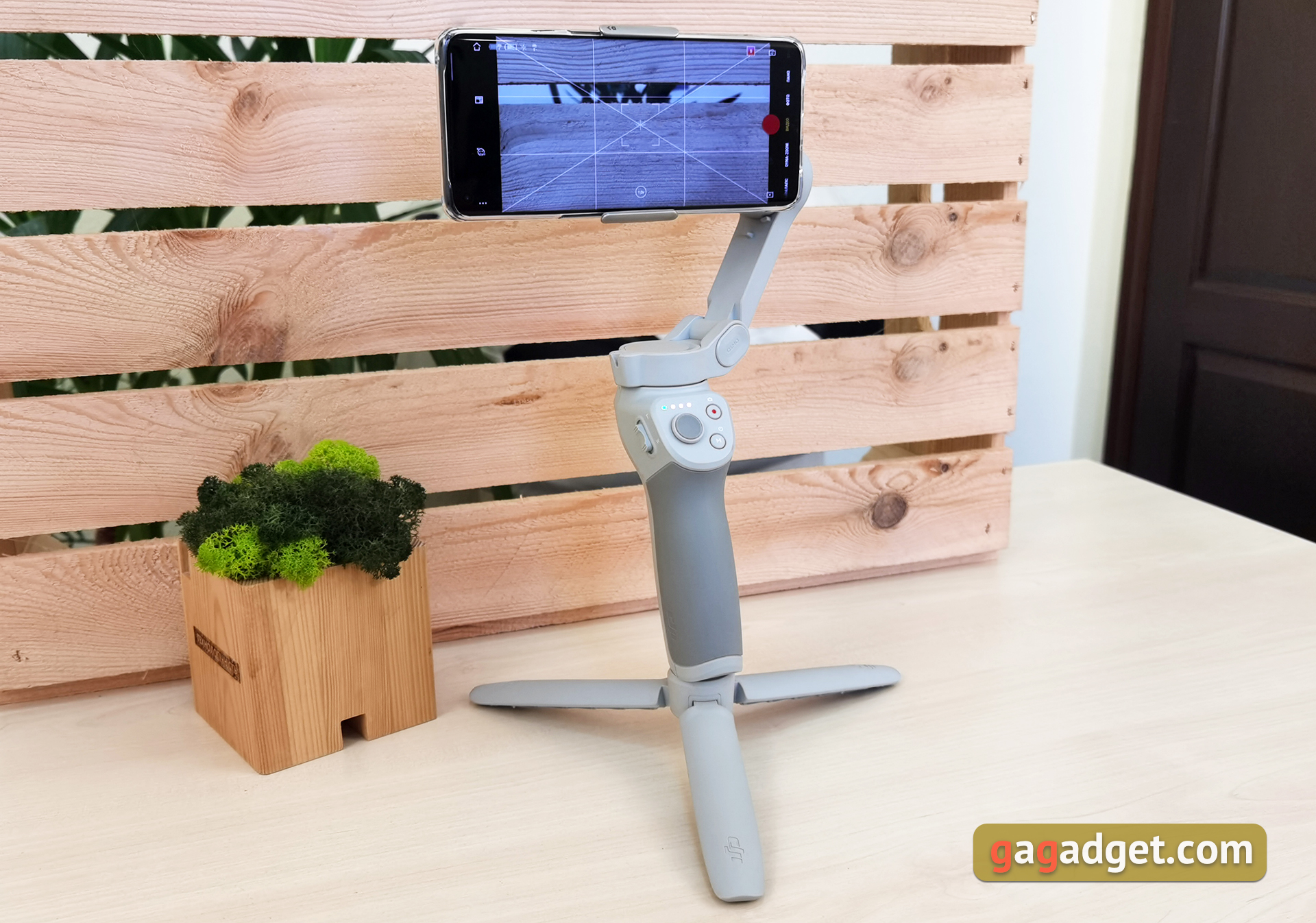
3 things to know about the DJI OM4
- The stabilizer is physically compatible with almost all modern Smartphone models.
- For maximum functionality it is desirable to have an Apple, Samsung or Huawei smartphone (and it is advisable to check the compatibility on the website).
- The stabilizer is convenient, easy to use, compact and has a folding design.
